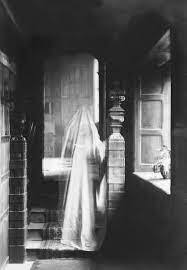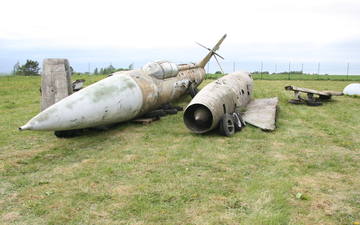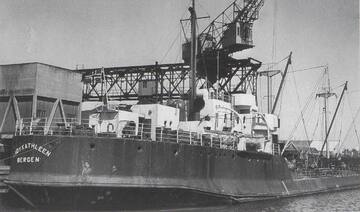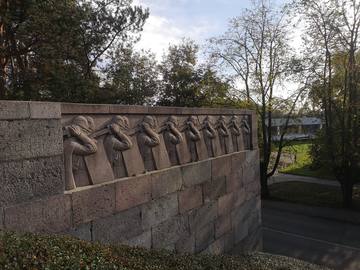Military Heritage Tourism Stories
Tales, personal memories and evidence about the military heritage locations and their history. These stories may be about a place that can be seen, in which case they are marked on the map along with other military heritage objects. There might also be stories about objects that have disappeared and can no longer be found. These are not on the map.
Note: Not all of the stories will necessarily relate to historically proven facts. They are based on people's personal memories, experiences and understanding of historical events.
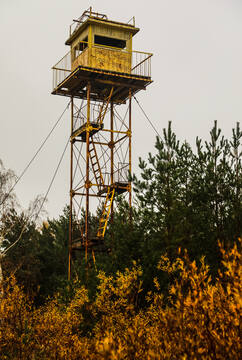
"Back to Mazirbe" (fragment)
A sharp event from the life of Vilnis Blumbergs, when coming to Mazirbe to visit his aunt, turned into an unpleasant misunderstanding with the soviet border guards and a harsh night in the winter
"We will not surrender alive!": the last hours in the bunker
On January 7, 1948, in the forest of Miliai village, Viekšniai parish, after a long resistance, two young partisans - Pranas Šiuipys and Albertas Švažas - died after refusing to surrender to the Soviet army.
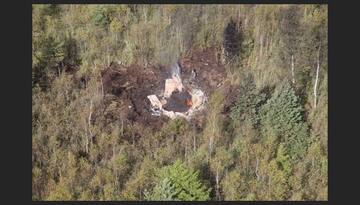
Zvardineika's childhood in the shadow of bomb explosions - the downed plane
The landfill continued to be used until 1992, and even in March 1992, an airplane taking off from Lielvārde crashed in the landfill territory for unknown reasons.
Lithuanian soldiers' stories about everyday life in war
The memoirs contain a variety of recollections from everyday life in the war, experiences of battles, military humor, everyday conditions, and Bolshevik searches.
Aviator Utochkin's flights in Tartu
The first flights in the skies of Estonia - pilot Utotškin over Raadi in 1912.
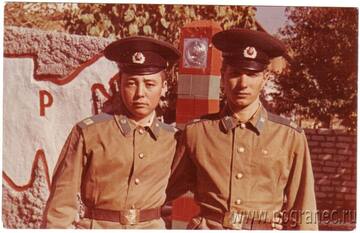
Strangers in the border zone
Border guards had a unique way of finding out about strangers in the border area.
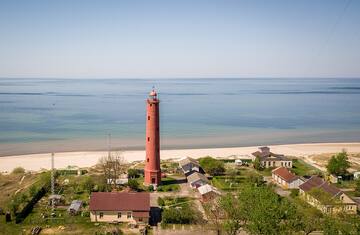
Forbidden Lighthouses and Seashore
During the USSR era, the seacoast in North and West Kurzeme were actually military zones closed to the public, but it was forbidden to visit the lighthouses or even take photographs
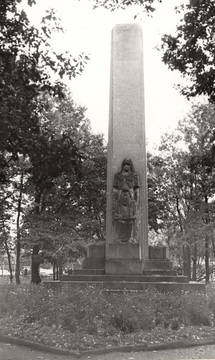
Monuments to the Independence of Lithuania. Histories of Monuments Created by Roberts Antinis: (II) Soviet Period
Most of the monuments to Independence (related to Lithuanian statehood and the struggles for it) erected between the wars were destroyed during the Soviet era as ideologically dangerous or inappropriate. The occupiers destroyed not only people, but also memory and signs of memory. The monuments created by sculptor Roberts Antinis also suffered a similar fate.
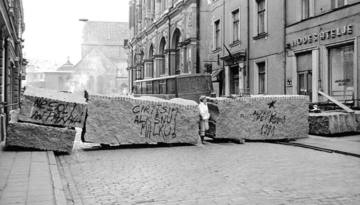
From Rezekne to the barricades of 1991
The narrators describe the mood and personal experiences of the Barricades period. The memories well illustrate how information was able to reach the inhabitants of Latvia throughout its territory.
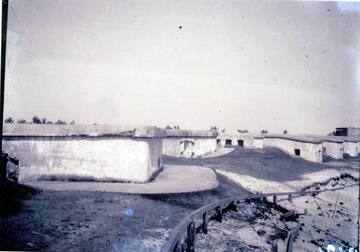
Army presence on Mangalsala
The memories contain vivid impressions of the presence of the Latvian army on Mangalsala. The forts are described, as well as the reinforced concrete fortification built by Sapiers. The memories describe the soldiers' everyday life, the rhythm of life and illustrate the environment on Mangalsala. Visit of Mangalsala and Latvian army soldiers
Rainių žudynės: netikėtai atrastos aukos
On June 24-25, 1941, in the Rainiai forest, near Telšiai, the NKVD and Red Army soldiers brutally tortured 73 political prisoners from Telšiai prison - this became one of the most horrific Soviet crimes in Lithuania.
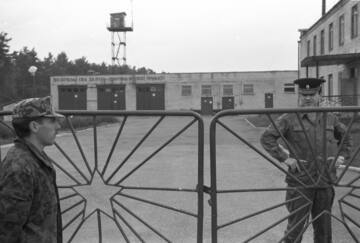
About the relations of Košradznieki with Soviet soldiers
Imants Upners' memories of the Soviet era.
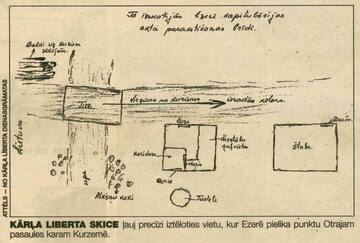
Memories of Kārlis Liberts about the day of the surrender of the German army in Ezere
The Ezere Cultural History and Local History Materials Repository "Customs House" is located in a historically significant building. On May 8, 1945, the act of capitulation of the Nazi German Army Group "Kurland", which was surrounded on the Kurzeme Front, was signed here.
Former Red Army soldier Kārlis Liberts shares his memories of the events of that day.
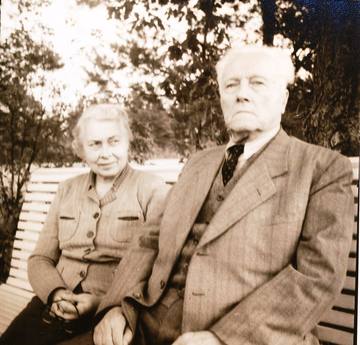
The life of General Jānis Baložs after his return from exile
When in 1940 the Russians tried to squeeze a favorable military base agreement from the Latvian government, which would make the Latvian army's ability to resist the Red Army almost impossible, General J. Balodis tried to get some amendments to the agreement. However, this did not work. But the general's detractors used this circumstance to later make J. Balodis almost a traitor. After a conflict with the Prime Minister and State Minister K. Ulmanis, the general was dismissed from the post of Minister of War on April 5, 1940. Then J. Balodis decided to participate in the Saeima elections from the Democratic Bloc, but nothing came of it, because only one list was allowed to run in the elections - the list of communist candidates. Latvia became the 14th Soviet republic.
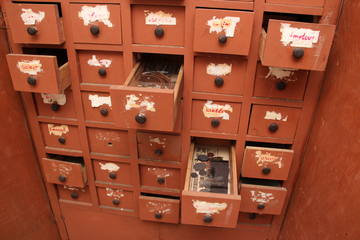
About the Corner House
The narrator describes her first impressions of arriving at the Corner House. The memories reveal the harsh living conditions of the prisoners.
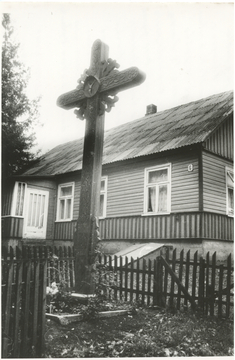
The poet's last journey
On October 7, 1944, the same day as the Battle of Seda, the young poet Vytautas Mačernis was tragically killed while trying to escape to the West.
Source: Memorandum for Baltic Way organizers
Documents related to the organization of the Baltic Way in 1989 are presented, revealing the organizational concerns of the campaign, its symbolic details, and their meanings.
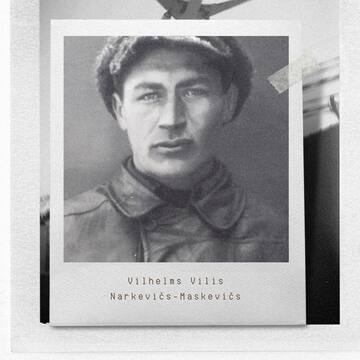
Description of the combat activity of Vilis Narkevics on 6 November 1919
Description of the combat activity of the commander of the detachment, Lieutenant Commander Julius Rosenthal Vilis Narkevics, 3 November 1921
Stories of war invalids about injuries and experiences of treatment in a military hospital
The memoirs reveal the experiences of two men, Bronius Tvarkūnas and Liudas Sakalinis, joining the army, being injured, and being treated in a military hospital.
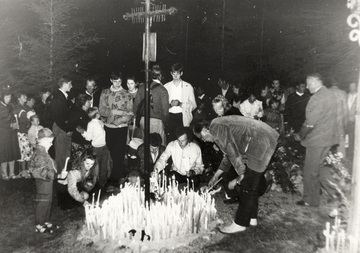
Rainiai Massacre: An NKVD Crime Without Witnesses
On June 24-25, 1941, in the Rainiai forest, near Telšiai, the NKVD and Red Army soldiers brutally tortured 73 political prisoners from Telšiai prison - this became one of the most horrific Soviet crimes in Lithuania.
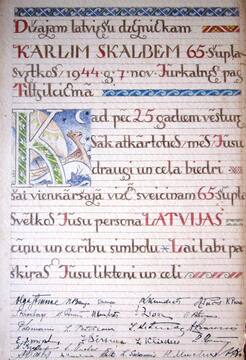
The last birthday celebration of Kārlis Skalbe on the Kurzeme coast
On November 7, 1944, a bright mood was brought to the Latvian refugee settlement on the Kurzeme coast by the commemorations of the poet Kārlis Skalbe’s 65th birthday in the “Laukgaļi” in Jūrkalne. Just four days later, Kārlis Skalbe set off by boat to Sweden as a refugee. It was the day when Kārlis Skalbe celebrated his birthday for the last time.

Tank Range Dobele - 2 (Gardene)
One of the largest tank training grounds in Northern Europe was located in the area of present-day Gardene. Dobele-2 was a military settlement until 1992, where the 24th Tank Training Division was stationed.
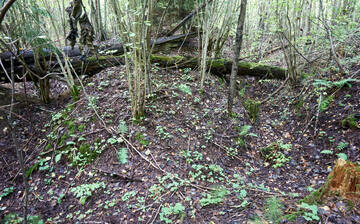
On giving place names during wartime
When troops occupied an area, it was not always possible to find out the names of specific houses, hamlets or villages. The local population had been evacuated and there was no one to ask, so the Germans tended to give places their own names. A story about the house in Wilischki has survived. In his memoirs, the commander of the pioneer company, Lieutenant Colonel Koch, who had attended a reserve officer course, writes that one of the artillery units was stationed near the house.
Battle of Merkinė
One of the largest partisan battles took place in Southern Lithuania, when the town of Merkinė was occupied.
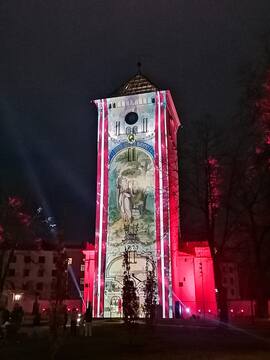
The tower of the Holy Trinity Church in Jelgava at Akadēmijas Street 1, where Egons Užkurelis and Jānis Ģēģeris hoisted a homemade Latvian flag in 1952
On October 12, 1952, Egons Užkurelis, who was only 14 years old at the time, together with his friend Jānis Ģēģeris, who was a year older, hung a homemade Latvian national flag on the tower of the Holy Trinity Church in Jelgava, which was destroyed in the Soviet-German war in July-August 1944.
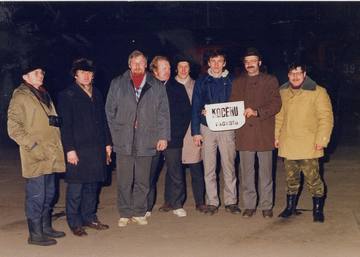
Memories of Kocēnietis Tālavs Megnis about the events at the 1991 barricades in Riga
Memories of Kocēnietis Tālavs Megnis about the events at the 1991 barricades in Riga.
"On January 13, about 40 Kocēni residents left the collective farm in an organized manner for a demonstration in Riga on the Laz bus, driven by Vitaly Sprukts, and the Latvija minibus, driven by Jānis Grava.
After the demonstration, when we met at the buses, we heard the Latvian People's Front's call on the radio several times for those who can to stay in Riga and defend strategically important objects to make their capture more difficult, similar to what happened at Vilnius Television. We saw these footage filmed by Podnieks before leaving for Riga.
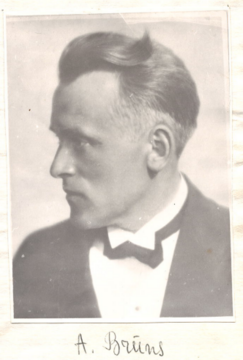
The underground bunker of the German army division headquarters near the "Sirsniņi" house in Pampāļi
Alfred Brown's story about the German headquarters in the yard of his native house, where a German soldier led Alfred blindfolded under cover of night, not knowing that this house was his native house and Alfred knew every stone in the yard even with his eyes closed.
Saving the bridge over the Nega River from being blown up
During the German retreat in 1944, many important objects were blown up and it was very difficult to prevent this, however, there are also stories about miraculous incidents when the courage of local residents and the tolerance of a soldier allow places that are important to the locals to be saved, and the salmon survived. One of the stories is this one about a discussion between a housewife and a German soldier that saved an entire bridge from being blown up.
I spend time by the sea.
Edgars Hausmanis, who spent almost his entire life in his family home in the village of Vaide, "Purvziedi", tells about life on the Baltic Sea coast at different times. Edgar has something to remember, and we have something to learn from.
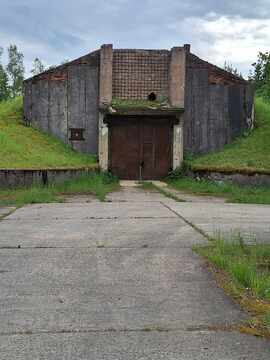
About the secret hangar of the nuclear base
A top-secret hangar was installed at the underground thermonuclear missile base in the Plokštinė forests, about which local residents still know very little and whose purpose is shrouded in rumors about the storage of nuclear missile warheads.
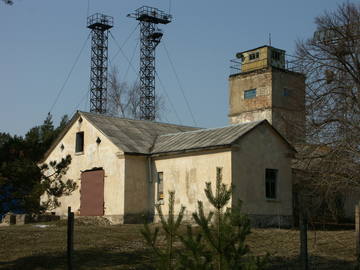
Kolka Cape Border Guard Observation Tower
During the Soviet era, border guards observed and controlled the waters of the Irbe Strait from this tower, and in those days it was said that even a duck could not swim through this strait without the border guards' knowledge.
Justinas Lelešius Grafas's memoirs about the discovery and destruction of a partisan hideout
It tells the story of how the Stribs and MGB officers discovered a partisan bunker in the post-war years and liquidated the partisans hiding inside.
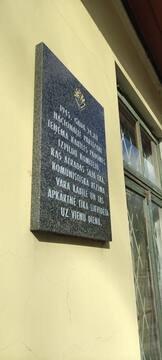
The capture of Kabyle at the turn of 1945-1946
One of the most striking manifestations of post-war armed resistance in Kurzeme was the capture of Kabile on Christmas 1945 and the subsequent battle near the Āpuznieki house on January 1, 1946.
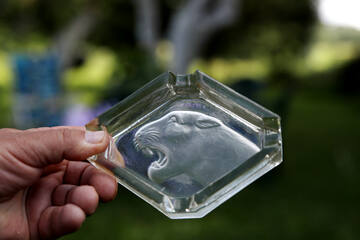
Ashtray with panther head from German fortification lines
The last fortification lines of the army group "Kurzeme" were located in the vicinity of Krotė and many objects related to the Second World War have been found there.
Slītere State Reserve in the border regime zone
Memories of former employees of the Slītere State Reserve about the Soviet era.
Memories of volunteer, junior non-commissioned officer Zaranka about the Independence Struggles
The memoirs of the junior non-commissioned officer Zaranka describe the battles against the Bolsheviks, Poles, and Bermontites. The memoirs describe the motives of the battles, and much attention is paid to the description of the daily life of the war and combat actions.
Battles in Kübassaare
With the extensive amphibious landing from the mainland to the Muhu coast in 1941, the Germans also landed in the southeastern part of Saaremaa.
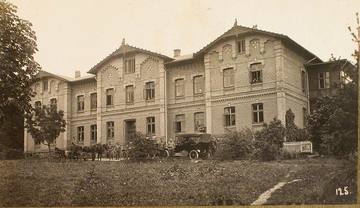
Bērzaine Gymnasium - Witness of the First World War
In the spring and summer of 1915, German troops occupied Courland and Semigallia. The troops of the warring parties were stationed on the banks of the Daugava River. Vidzeme became a frontline territory, and Cēsis a frontline city, around which the headquarters of the 12th Army of the Northern Front of the Tsarist Russian Army was located, which in the summer and autumn of 1915 moved to Bērzaine near Cēsis (Birkenruh bei Wenden), in the building and territory of the current Cēsis Bērzaine Elementary School.
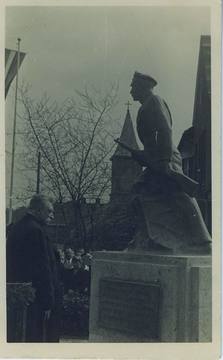
The unusual story of the monument to the Cēsis Regiment's School Company
The Cēsis Regiment volunteer schoolboy company participated in the 1919 Cēsis battles, which formed as a combat unit from 108 young people from Valmiera and Cēsis schools on June 5 in the former Cēsis German Progymnasium premises on Dārza Street (now Bērzaines Street 4). Already on the night of June 5 to 6, about an hour after midnight, there was an alarm and the company was ordered to go to positions. The company went out to the Mācītājmuiža – Meijermuiža line, which was considered the most important battle area.
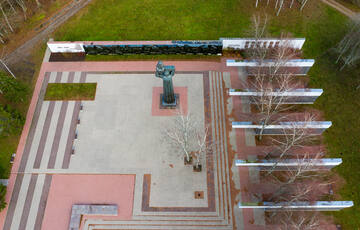
"The war is not over until the last soldier is buried" (Priekule Brethren Cemetery)
Kurzeme emerged as a separate and isolated battlefield on October 10, 1944. About 500,000 German soldiers were considered surrounded. According to reports from the headquarters of the 1st Baltic Front, only "a small effort" was needed to completely liberate the entire Baltic coast. However, the fighting in Kurzeme continued for another seven months and Kurzeme became a symbol of the end of World War II.
During the seven months of fighting until May 1945, the German armed forces in Courland lost 154,108 soldiers killed, wounded, and missing, while the Red Army's losses were around 400,000 killed, wounded, or missing.
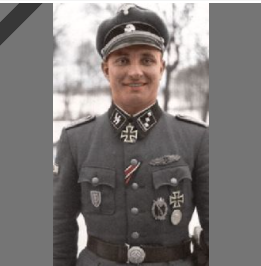
The Battle of Pilsblīdene in the Memoirs of Roberts Ancāns
Robert Ancans (11 November 1919 - 1 January 1982) was an officer of the Latvian Legion, Knight's Cross of the Iron Cross, who took part in the battles of Pilsblidene on 16 and 17 March 1945. The Sixth Kurland Battle is now in its fourth day. Anzāns had served in the Pilsblidene area and therefore knew the area well. Anzans' division is again diverted by another break in the front - an 8km deep invasion by the Red Army. Anzán is wounded in these battles.
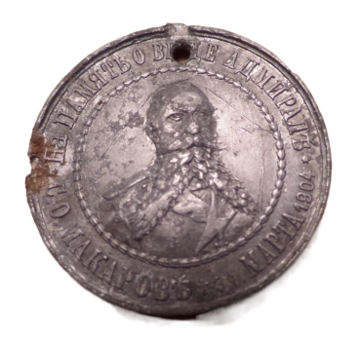
A commemorative badge dedicated to Admiral Makarov was found in the yard
A small military relic can tell a vast historical story. And although the badge represents events that took place during the Russo-Japanese War, it also shows the colorful military history and the involvement of our Latvian Riflemen in other military conflicts, both before and after the Wars of Independence.
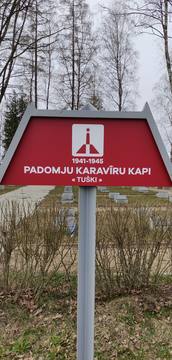
Exhumation of Soviet Army soldiers in Blīdene parish in 2019
In July 2019, the Soldiers' Search Team "Leģenda" exhumed 66 soldiers' ashes in a forest in Blīdene parish. Due to superficiality or omission during the Soviet era, the majority of these soldiers are counted as officially reburied during the Soviet years. The names of these soldiers are even engraved on the tombstones in the Tuški Brethren Cemetery.
Hans-Gotthard Pestke
Knight of the Knight's Cross in the battles for the capture of Hiiumaa
Forced Labour on the Jalaka Line
How anti-tank trenches were dug on the Jalaka line to protect against the German offensive in the summer of 1941.
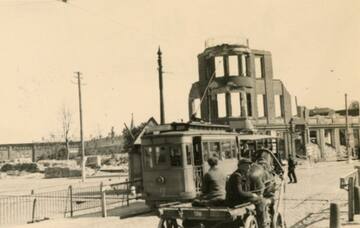
Liepāja - at the crossroads of various historical events
The inhabitants of Liepāja were among the first in Latvia to experience the outbreak of the Second World War and among the last for whom the war ended both literally and symbolically. The Second World War and the Soviet occupation of Liepāja ended only in 1994, when the last troops of the USSR's heir, Russia, left the city.
Formation of the local team in 1944.
Col. Oskaras Urbonas' story about the formation of the Local Team in 1944.
Why the Olympic Games were not held in Latvia...or submarine repairs in Daugavgrīva, at the Baltic Navy repair shop
When Moscow was preparing for the Summer Olympics in 1980, the question was where to hold the sailing competition? It turns out that the choice initially fell on Riga, because there are ideal conditions for sailing in the Gulf of Riga and the city is also old and beautiful, it will not be ashamed. However, some Riga residents still remember or the younger generation has read on the Internet that Riga "supposedly.. refused this high honor and therefore the organization of the competition was moved to Pirita, a suburb of Tallinn. The Estonians received huge funding and built themselves a new and modern complex for sailing and recreation, which after the end of the Olympics, not a single Latvian went to admire... But now one interesting nuance has been revealed - it has become known why Riga refused this honor...
Life at the headquarters of the stribes
It tells the story of the post-war situation in the Lithuanian countryside and the decision to become a partisan.
A story about the life of partisan Emilia (Ema) Lajunienė
The story tells the story of a female partisan's decision to become a partisan, her joining a partisan unit, and her eventual arrest.
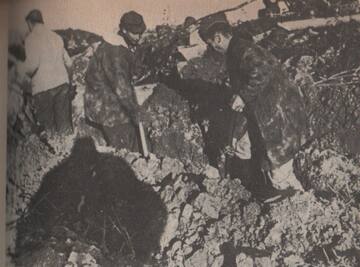
"Digging is better than burrial!"
The order of the Army Group “Kurland” is: "Build and build!" It is a task for every soldier of the front of the rear services. Which is best marked by the word: "Digging is better than burrial!"
Aviation Engine Testing Laboratory
During the Soviet era, there was a strange object north of Spilves Street, if memory serves - with two low rectangular "mega-chimneys" built of red brick, from which a jet-like sound similar to the roar of airplane engines could be heard quite often.
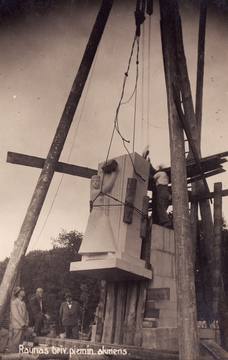
Rauna Freedom Monument or Monument to the memory of the members of the Rauna parish who fell in the First World War and the Freedom Struggles
The origins of the idea for the Rauna Freedom Monument can be traced back to August 21, 1929, when the mayor of Cēsis and the head of Cēsis district invited the most prominent public figures of Rauna parish to a meeting, inviting them to honor the achievement of freedom and build a monument in Rauna.
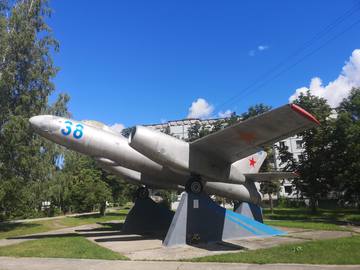
Skulte military bomber
The article in the newspaper vividly demonstrates the situation in modern Latvia, when in many places environmental objects glorifying the Soviet occupation army have been preserved and are even being restored (often at the expense of local governments). The indecision and lack of will of the authorities create long-term, confrontational situations in society. The various monuments, memorials and environmental objects are not perceived as historical or commemorative sites, but as tools that continue the ideology of the Soviet occupation regime.
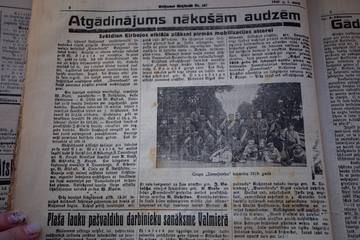
Fragment from the founding of the Northern Latvian Army on the Rūjiena side
The North Latvian Army was a Latvian military formation during the Latvian War of Independence, which was formed from 3 February to 31 March 1919 in the territory of Estonia and the Northern Vidzeme regions liberated by the Estonian Army. Until July 1919, the brigade was subordinate to the Estonian Armed Forces Headquarters and the Commander-in-Chief of the Estonian Army in terms of logistics and operations. It was then merged with the South Latvian Brigade, forming the Latvian Army.
Col. Lt. Col. Kukinas's memories from the Daugava Front
The memoirs testify to how Jonas Karutis, a war invalid, was wounded, lost one eye, but returned to continue fighting.

Kolka Coast Guard Observation Tower
Hidden in the last pine trees of Cape Kolka is a border guard tower, where a border guard post was constantly located during the Soviet era, and the small stone building next to it is now abandoned and falling into ruin.
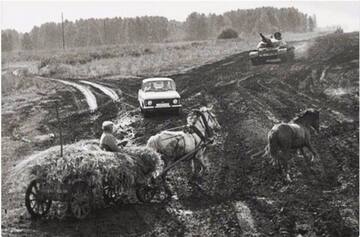
Stoning of tanks
During the Soviet era, the entire Kurzeme coast was a closed zone. Children who lived near the Soviet army unit in Targale parish, including Ovishi, used to have fun throwing stones at tanks.
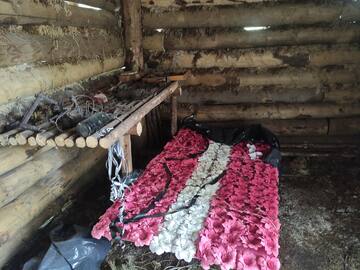
The Battle of Dzelzkalni in the Zūri Forest on February 23, 1946
The winter of 1945/46, the Brass Group spent in the Zūri forest in the Dzelzkalni area, where several bunkers had been built. Approximately 40 partisans lived there. On February 23, 1946, the camp was surrounded by the USSR Internal Affairs troops and a fierce battle took place.
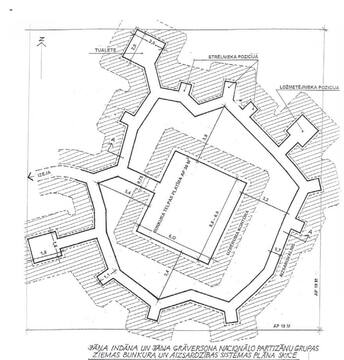
Selija's forest brother settlement in the Sūpe swamp
The Sūpes swamp is associated with the sites of national partisan settlements and battles, which were formed through the interaction of people and places. It is described in the ballad of the exiled Latvian writer Alberts Eglītis about the events in his native Sūpes swamp “In Moss and Mud” - a tribute to the Sūpes swamp partisans:
… “In 1945, as autumn glowed in the swamp -
On Pokļevinskis' birthday, Lieljānis shares at dinner:
Beer fermented in willows,
The Romulans worship butter,
I dry my mother's caraway bread,
Dried ham in March cuts,
And Stuchka's onions,
Ildzeniece cheese.
Rooms in resinous walls
And lightning has struck hearts,
And in eleven souls languish-
"The roots that have rotted in the ground..."
This interpretation of the past, with its post-World War II events, included human testimonies, expressions of spirit, and value systems. It recalls the popular support for the national partisans, whom the occupying power could not defeat so easily.
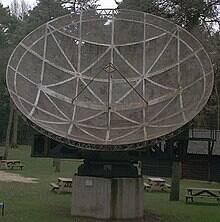
German army radar post in Ulmale
The German armed forces deployed radar stations in several locations, which allowed much earlier identification of enemy aviation activity in the Kurzeme area.
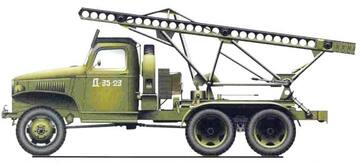
Aizvīki in the Kurzeme Cauldron
In Aizvīķi Park, you can still clearly see the remains of World War II bunkers, trenches and caponier ramparts where weapons were stored. One of the types of weapons was the Katyusha rocket launcher system.
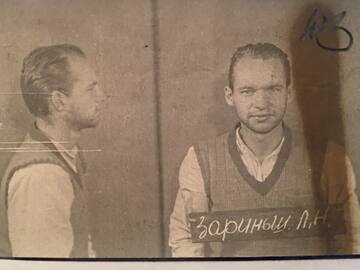
US CIA paratrooper Leonids Zariņš - "unfit for recruitment" by the Cheka
Leonid Zariņš was recruited as a CIA agent in the USA and in 1953 he crossed the USSR border on a plane from Germany and parachuted near Auce. Unfortunately, one of the contacts he was supposed to contact had turned out to be a double agent, and Leonid was soon arrested. He refused to cooperate with the Chekists and was shot without trial in 1954.
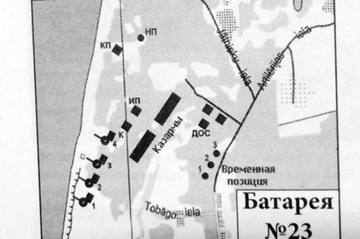
The story of a unique military facility in Karosta
For years, I have not noticed any sustained interest in the unique places just eight to ten kilometres north of the city centre among the residents of Old Liepaja. But hidden in the thicket of the forest, on the dune bank or on the marsh paths, the historic sites of the Karosta are no less interesting historical facts and stories worthy of long-forgotten legends. One of them - the former 23rd Coastal Artillery Battery of the USSR - will be the subject of this story.
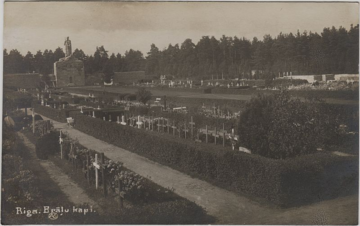
This is how the Brothers' Cemetery in Riga was born
The narrator describes the circumstances under which the most famous Latvian memorial, dedicated to fallen soldiers, was created. As can be seen in the memoirs, the cemetery of national heroes faced a series of obstacles and unfavorable - dismissive attitudes not only from the church, but also from the Riga city government.
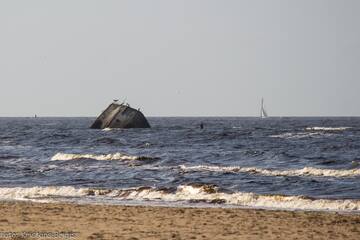
Sunken ship on Mangalsala Island
During the Soviet era, the concrete cargo ship Lady Kathleen crashed here, in a military zone, and its remains can still be seen in the sea near the shore. Various myths are still associated with it.
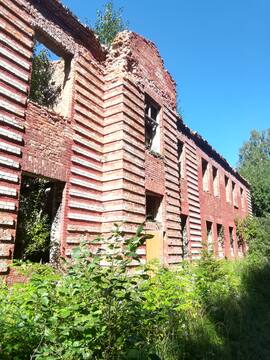
The fate of Krasnoflotsk after the Soviet withdrawal
After the last Soviet troops left Latvia in 1993, the Krasnoflotsk or Olmani coastal defence battery also came into the possession of the Latvian National Defence Forces. Soon the orphaned property began to be seized by for-profit prospectors.
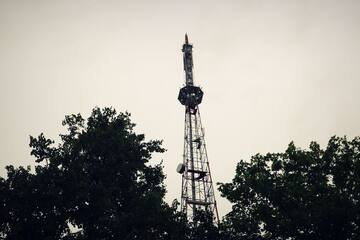
About the former military facility of Upīškalns
Memories of Valdis Pigožnis during the operation of "Upīškalns" about Upīškalns military base
(Pigožnis was former head of Kurmale parish)
Latvia and Estonia are building modern submarines
Latvia and Estonia choose new and modern weapons to strengthen their military forces – submarines built in France and Great Britain. Two submarines of the Latvian Navy later did not participate in the naval battles of World War II, but one of the two Estonian submarines was lost, while the surviving Lembit is now on display in the museum exhibition in the renovated seaplane hangars in Tallinn.
Excerpt about the Saxon volunteers from the memoirs of Gen. V. Grigaliūnas Glowackis
The memoirs describe an episode from the independence struggles, which shows the relationship between the Lithuanian army and the Saxon volunteers.
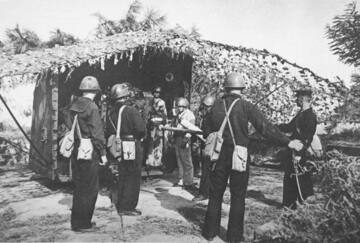
The story of the fire control tower of the 46th coastal defense battery in Ventspils
The Ventspils Military Heritage Site is unique because it is one of the few coastal defence structures in Latvia and the Baltics that depict the history of World War II fortifications. It is also unique in that it is a military object built by the Soviet Union during the years of independence of the Republic of Latvia and in a way symbolises the inability of a small country to confront the superpowers on the eve of World War II. It is the only coastal defence battery that has survived so well, without historical layers and in its complete state of construction. The site shows the entire evolution of the Soviet military concept from 1939 until the withdrawal of Soviet troops in 1994.
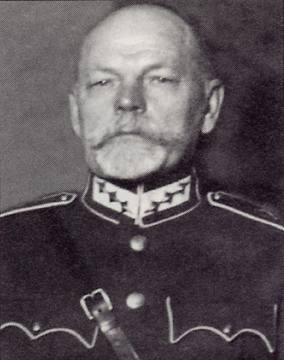
About the first Commander-in-Chief of the Latvian Army, Dāvids Sīmansons
The essays in the book "Commanders of the Latvian Army" convince us that history is significantly influenced by specific individuals. Although they were at the epicenter of the most important historical events for a short time, true Latvian patriots, with their rich military experience, managed to do a lot in the formation and strengthening of the Latvian army and in the turning points of historical events.
This story is about the first Commander-in-Chief of the Latvian Army, Dāvids Sīmansons (1859-1933).
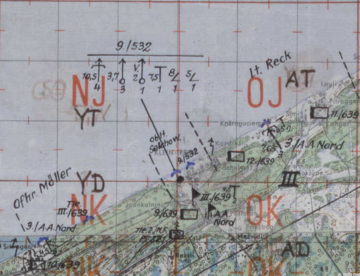
Red and German army plans between Mazirbe and Gipka in May 1945
At the very end of the Second World War, both the Red Army in offensive positions and the German Army in defensive positions had plans which, given the end of the Second World War, were not implemented by either side.
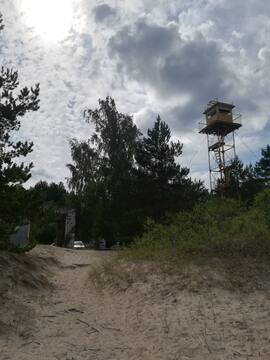
In the footsteps of a spy
People's memory is sometimes quite short. Now, when everyone can go and go wherever they want, many cry about the lost cheap sausage, but they have already forgotten that right behind Mērsrags, in front of the road, a striped bomb often landed and armed Russian soldiers, called border guards, let them through only with written and stamped passes. And not just any resident of the Latvian SSR could receive a permit, but only those who had first received a so-called summons from the Roja or Kolka village council, on the basis of which, after ten days, they could (or could not) receive a visa for entry into the prohibited border zone at their militia unit. I had bought a house on this unfortunate coast of Kurzeme, so every spring I and my family members had to pray and humble themselves so that the authorities would renew the entry permit.
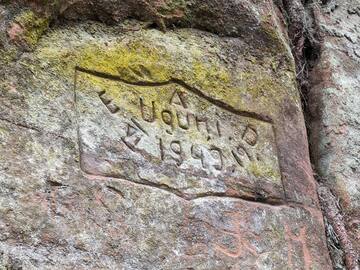
Historical evidence in the Līči – Laņģi cliffs
Fragments from local history enthusiast Aivars Viļnis's story about history and its evidence found in Lode and Liepa, in what is now Cēsis municipality.

Artūrs Ozols' memories of the ship "Saratov"
Artūrs Ozols graduated from Riga Polytechnic and served as a naval officer (midshipman) and engineer in the Russian Black Sea Fleet aboard the warship Panteleimon. During the Latvian Liberation Struggle, he joined the Student Company. In Liepaja he put the ship "Saratov" into service. Arthurs Ozols' memoirs about the ship "Saratov" were published in the Dauagava Vanagi monthly
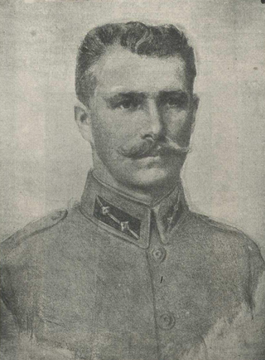
In memory of Oskars Kalpaks
The memory of Oskars Kalpaks is preserved in many places – this is evidenced by his native Liepsalu house, a monument in the Visagala cemetery, commemorative events and beautiful concerts on March 6, the Meirānu Kalpaks Elementary School, streets in Lubāna, Madona and other cities, and on and on. But in this article – about the preservation of the memory of Oskars Kalpaks in his native region in the 1920s–1930s.
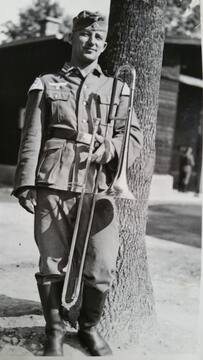
Missing German soldiers during the Battle of Courland - Karl Grimm
The records of the German army group "North", later renamed "Kurland" during the siege of Courland, still do not contain clear information about the approximately 50 000 German soldiers. These soldiers are listed as missing. Even today, the relatives of these soldiers are trying to find traces of their relatives and ancestors in Kurland, both documentary and physical. One such story is that of Karl Grimm, a German soldier from Swabia (a historical region in south-west Germany, at the source of the Rhine and Danube rivers), whose war career was cut short on 27 October 1944 at the Krūmi home near Vaiņode (5 km to the NW from Vaiņode, Latvia)
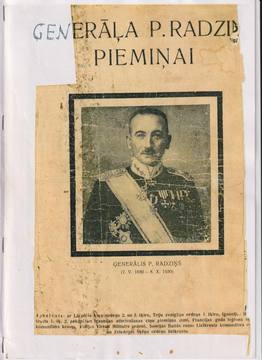
In memory of Pēteris Radziņš, general of the Latvian Army, two-time Cavalier of the Lāčplēsis War Order
General Pēteris Radziņš was born in Lugaži parish, Valka district, into a simple farmer's family, where he learned to do field work. He was a very smart young man, after graduating from school he decided in favor of war and thus began his army career, saving Latvia from Bermont's troops. P. Radziņš was one of the most outstanding officers of the Latvian army and was awarded numerous Latvian and foreign orders and commemorative signs.
Fake amber on the Liepāja side
For more than twenty years, the Liepāja coastline has been dangerous due to fake amber, which the sea tends to wash up from its depths especially generously during spring and autumn storms.
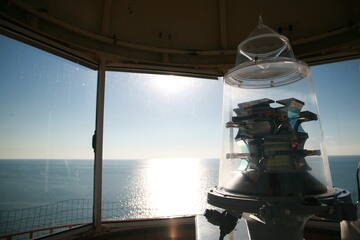
Cape and the ship "Saratov"
It can be assumed that Liepaja was the capital of Latvia for a short period of time, because during the Freedom Struggle the Provisional Government was stationed on the ship Saratov in this very city. The Saratov took the Provisional Government to Riga after its liberation, but many people do not know that the history of such an important ship for us ended at sea at Akmenrags.
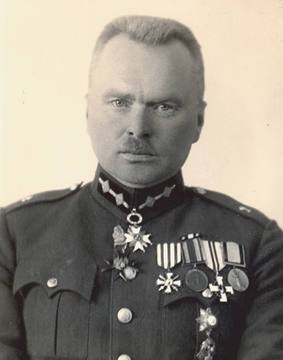
A moment of remembrance at the Garrison Cemetery
After the restoration of Latvia's independence, Uldis Veldre, head of the Alūksne Brothers' Cemetery Committee, took on the responsibility for maintaining the Garrison Cemetery, identifying the resting places of the LKOK related to Alūksne, and installing memorial signs in the Garrison Cemetery.
Waiting for a baby in the woods
The story tells of a female partisan's hiding and the birth and raising of a child in the forests.
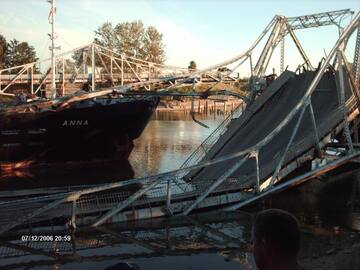
The story of the O. Kalpakas Bridge
In its more than 100 years of existence, the bridge has survived two wars and different owners, which have affected its operation. The bridge was blown up during World War I, but was rebuilt after the war, only to be damaged again in 1926 by the steamship Narne. The bridge was rebuilt again, but it also suffered during World War II when the invading Soviet army shelled the port of Liepaja.
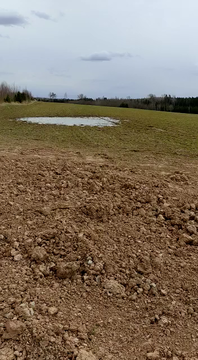
Battles at Kaulači Manor in March 1945
In 1945, there was a Red Army observation post near Kaulači half-manor. Eyewitnesses recalled that fighting broke out in March 1945. This is not the first time that World War II-era graves have been found in this field.
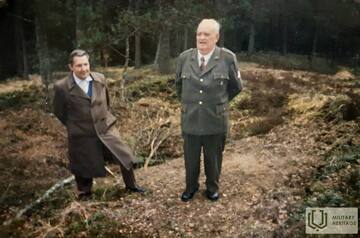
Jānis Tilibs' memories of the partisan unit "Tēvijas Vanagi"
Jānis Tilibs' memoirs about the activities of the partisan unit "Tēvijas Vanagi" in Southern Kurzeme until the year 1950
Recollections of Olev Metsmaa
A seaplane base was built on Papissaar and anti-aircraft batteries on Kiirassaar.
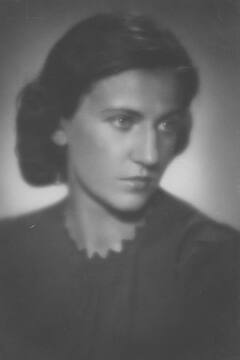
Valentina Lasmane's successful escape
A biographical story written by Valentīne Lasmane about how she managed to escape from detention during the German occupation
The Battle of Lūšė: the victory of twelve rebels over a Soviet train
On June 24, 1941, at Lūšės station in Mažeikiai County, a small group of Lithuanian rebels disarmed a train of Soviet soldiers and freed Lithuanians and Latvian families being transported to Siberia - this became one of the unique episodes of the June 1941 Uprising.
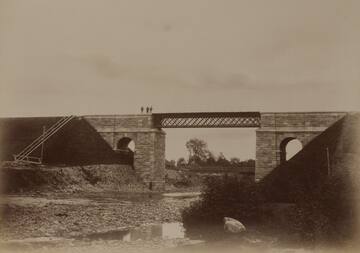
Battle at the bridge over Amata River
The Battle of Cēsis is one of the most significant stages of the Latvian War of Independence and also occupies a significant place in the history of the Estonian War of Independence.
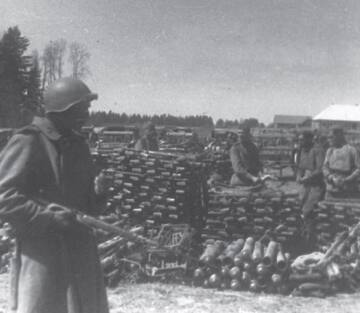
Memories of Jānis Miesnieks, a native of Ezera, about the end of World War II in Ezera
The Ezere Cultural History and Local History Museum "Customs House" is located in a historically significant building. On May 8, 1945, the act of capitulation of the Nazi German army units encircled on the Kurzeme Front was signed here.
Former Ezer resident Jānis Miesnieks (born 1930) shares his memories of the events of that day.
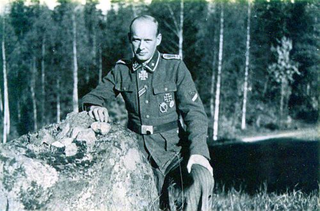
Alfred Riekstins - Knight of the Knight's Cross
At the beginning of 1945, fierce battles were still taking place in the Courland fortress, where Latvians were fighting in the ranks of the German army. One of them was Alfrēds Riekstiņš in the 19th division. For his bravery, Riekstiņš was awarded the Knight's Cross and presented it at the Remte Castle. Shortly before the capitulation, he became a lieutenant.
Pranas Čėsna's story about his brother joining the partisan ranks
It tells the story of the post-war situation in the Lithuanian countryside and the decision to become a partisan.
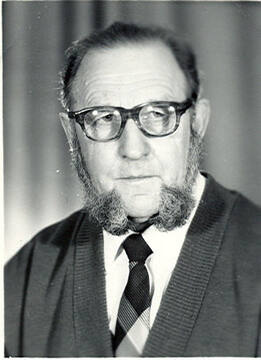
Regional researcher Žanis Skudra receives 10 years in prison for "Diary of Occupied Latvia"
Žanis Skudra devotes all his free time to local history, all his vacations to traveling around Latvia. This is how he accumulated materials, took photographs, and created the "Book of Occupied Latvia Days", which is published by the Latvian National Foundation in Stockholm under the pseudonym Jānis Dzintars.
On June 7, 1978, Žani Skudra was arrested in Tallinn and in November of the same year, the Riga Supreme Court sentenced him to twelve years in prison for treason and espionage.
How someone escaped from border guards in Ventspils on a self-built boat
During the Soviet era, border patrol ships were based in the port of Ventspils, whose task was to patrol the waters of the Baltic Sea and prevent border crossings from either side – from the outside in or from the inside out. However, in the 1970s, an extraordinary incident occurred in Ventspils, about which the people of Ventspils have long whispered and laughed heartily.
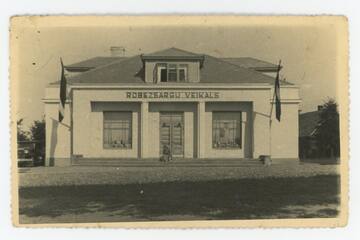
Border Guard in Latgale during the time of Colonel Ludwig Bolstein (1935–1940)
In 1935–1940, under the leadership of Colonel Ludwig Bolstein, an outstanding commander and patriotic leader, the border guard experienced prosperity – new border guard buildings were built, in which their families also lived.
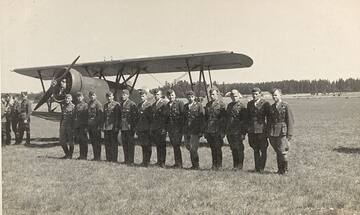
Raid on Vaiņode airfield in 1941
The story of the German air raid on Vaiņode airfield in June 1941
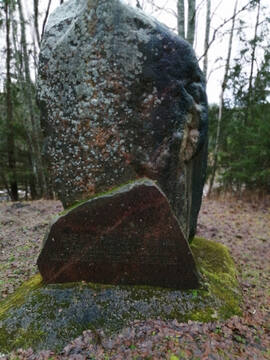
Description by Vilis Samsons of the Red Arrows battle with German police units on 7 March 1945
On 7 March 1945, the "Red Arrows" partisan camp was surrounded and attempted to be destroyed by German troops. Vilis Samsons, in his book published in 1974 by "Zinātne", Riga, describes the course of this battle

Soviet Army's unrealised plans on the Kurzeme coast in Melnsil and Gipka
At the end of World War II, the 6th Battery of the German Naval 532nd Artillery Division was stationed in Melnsil, but the Red Army had its own plans for the area, which were never realised until the surrender of the German army in May 1945.
Mines, bombs, torpedoes and chemical weapons in the Baltic Sea
In the early days of February 2010, news appeared on the Swedish television channel SVT that shocked and deeply surprised many.
Mokytojos Rimtautės kelias į Sibirą
Just two months after their wedding, teacher Rimtautė Jakaitienė was exiled to Siberia, along with her husband and his parents. Without trial, without charges - simply for being family.
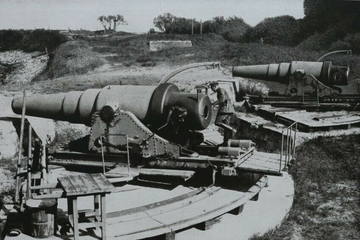
About Daugavgrīva Fortress
The narrator describes an event in the Daugavgrīva Fortress during World War I, when it was bombed by a German army airship. The fortress was one of the strategic objects that retained its importance until the end of World War II.
Recollections of Talmut Allvee about the construction of Ninase Coastal Defence Battery
The first construction workers appeared in Ninas as early as the fall of 1939.
Submarine marina in Alksnynė
A mysterious object on the Curonian Spit near Alksnynes, supposedly from the Soviet era. It is believed to have been a pier or a stopover for Soviet submarines. Although it is difficult to establish the exact facts today, various memories and associations arise in the minds of the inhabitants of that region.
Secret Veterinarian
Veterinary doctor Stanislovas Mikašauskas, who worked at the Plokštinė military base, shares his memories of unusual access to the base's territory and strict secrecy even in an informal environment.

Tērvete missile base
The Tērvete missile base was one of the secret strategic military bases of the USSR, where R12 ballistic missiles were deployed.
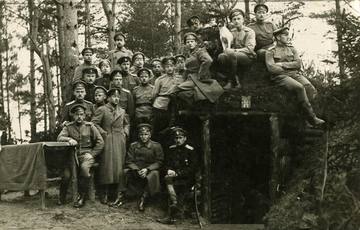
About Latvian riflemen in the Olaine area
The memoirs reflect the daily life of Latvian riflemen in the Olaine area. Not only are the living conditions described, but also their usual task - reconnaissance of enemy positions.
The legend of Ruhnu Lighthouse
The boilerplate lighthouse details produced in the factory were transported by ship to Ruhnu.
Riga Ghetto and the Holocaust
Fragments of three different people's memoirs were deliberately chosen, allowing us to look more closely at the crime of the Holocaust from different perspectives.
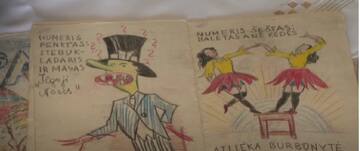
"Taiga" in Exile – Journalism Against the Regime
Vytenis Rimkus, an artist who was sentenced to death for publishing the newspaper "Taiga" in Siberian exile, but fate allowed him to survive and return to Lithuania. This is a story about the strength of spirit, the power of creativity, and the indelible national identity even in the harshest exile.
Abruka
After the outbreak of war in the summer of 1941, the Red Soldiers in Abruka were forbidden from communicating with the local population.
Captain Mikelėnas' story about the formation of the 1st Infantry Regiment
Capt. Mikelėnas' memoirs talk about his escape from the prisoner of war camp, his return to Lithuania, his joining the Lithuanian army, and his first battles with the Bolsheviks.
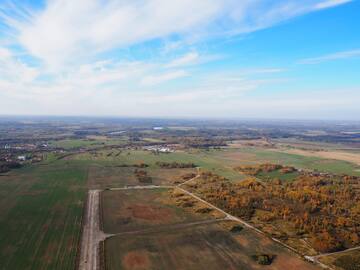
Jekabpils Airport
Jēkabpils Airfield is one of the military airfields in the territory of Latvia, which was created during the period of Independent Latvia around 1935. After the second occupation of the Republic of Latvia in 1945, the airfield was adapted for the needs of the USSR Air Force.
Tisza missile base
The Tisza missile base was one of the secret strategic military bases of the USSR, where R12 ballistic missiles were deployed.
The story of the Battle of Kalniškė
It tells the story of one of the largest Lithuanian partisan battles, presenting the causes, course and consequences of the battles.
Muhu Mother
During the Soviet Union, marriage registrations took place at the Vital Statistics Office in the city of Kingisepp.
Sniper hunting in the Annenieki hills
Sniper hunting in the trenches. The narrator describes the actions to capture and destroy enemy snipers.
Like being born a second time
In July and August 1941, the Nazi authorities in Kražiai massacred almost the entire community of the town. Marytė Gerčienė, a prisoner of the Kražiai ghetto and a collective farmer of the K. Požėla collective farm, miraculously survived this tragedy.
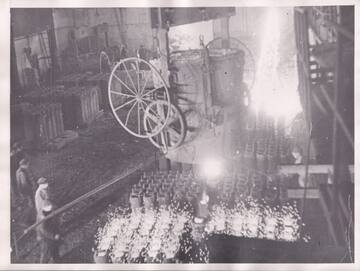
Tell me about the sunken equipment
Numerous stories of machinery sinking in swamps and lakes have survived in Latvia. Few of them are true.
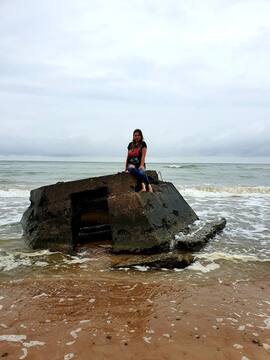
German army radar post in Jūrkalne
In order to protect the Kurzeme coast from a possible Soviet or even Western Allied attack, the German armed forces deployed radar stations in several locations, which allowed for a much earlier identification of enemy air activity. One of them was installed at Jūrkalne
Escape of two soldiers from captivity by the Polish army
The memoirs recount the experiences of battles, captivity, and escape from captivity of Lithuanian and Polish military units. The author of the memoirs is unknown, but the story stands out among the experiences of Lithuanian soldiers in the independence struggles.
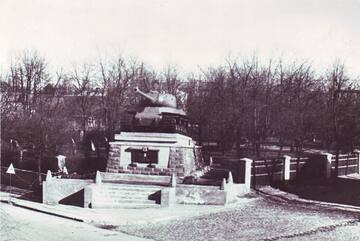
Salantai tank
The story of the Soviet heavy tank IS-2 in Salantai is told from the events of World War II to its becoming an element of the Soviet memorial and part of the artistic space (Orvidai Homestead-Museum).
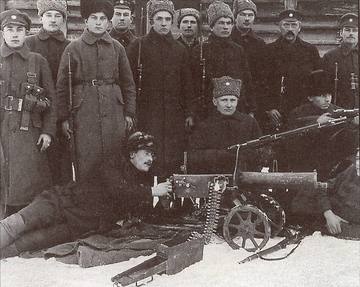
Liberation of Northern Latgale from the Bolsheviks
On December 1, 1918, the Red Army units, based on the Red Riflemen units, invaded the territory of Latvia. In order to protect their homes, families, native region and escape from terror, the men of the Balvi area took up arms and went into the forests, the formation of the first “green” groups began. In the spring of 1919, when mobilization was announced, many men of the Balvi area found fighting in the Soviet Latvian Army unacceptable and joined the “green” groups. The Balvi, Silakrogs, Rugāji, Teteru-Dūrupe and Liepna groups were formed. The activities of the “green” groups in the Balvi area became more active in March 1919.
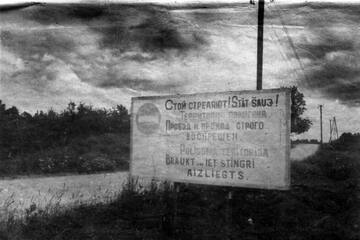
Soviet aircraft bomb Riteli Cemetery
The Riteli cemetery was actually located in the centre of the target area. The locals could only watch as they were destroyed.
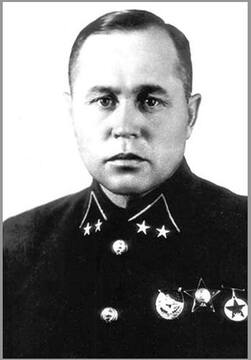
Wounding of Major General N. Dedayevs at the Liepāja Fortress, Vidus Fort
In June 1941, the successful attack of the German army had reached Liepaja, when Liepaja was attacked by the 291st Infantry Division of the German Armored Forces. When hostilities between Nazi Germany and the Soviet Union began in June 1941, the Liepaja garrison of the Soviet Army consisted of troops from the Liepaja naval base of the Navy and the Red Army. During these battles Major General N.Dedaev was mortally wounded
Border Guard Laundress
Kolka resident Mirdza Stankevica shares her memories of the times when she was a laundress.
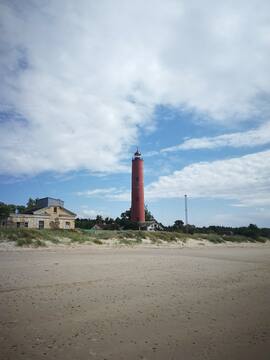
Akmenrags Military Complex
There was a military complex in Akmeņrags during the Soviet era.
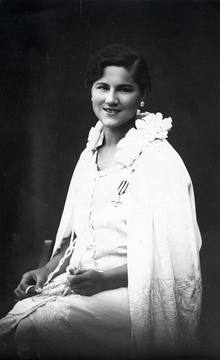
7th Sigulda Infantry Regiment's Bermontiad Battle, awarding of Grand Duchess Valija Veščūna with the Lāčplēsis War Order in Alūksne
After the Latvian War of Independence, Grand Sergeant Valija Veščunas was awarded the Lāčplēsis War Order for the battles with the Bermontites near the Plāņi houses on November 19, 1919. Valija Veščunas was one of the first to cross the Lielupe River under enemy fire.
The story of the Altar of Victory in Aidu
The story of the destruction of the Victory Altar of the Aidu War of Independence and the history of its remains.
7th Infantry Regiment Private Kazys Petrikas's Memoirs from the Battle of Širvintos
An authentic testimony about the Battle of Širvintos, which conveys the perspective of a participant and emphasizes the high spirits of victory.
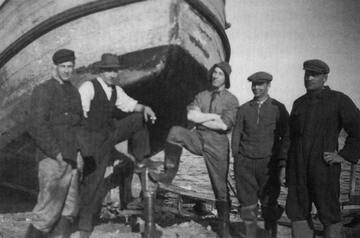
Refugee boat transfer point from the Kurzeme coast to Sweden near the "Pāži" houses
One of the important places of relocation was near the “Pāži” house, where a monument has now been erected - “Sail of Hope”. “The ships came regularly and the most people left from “Pāži”, says the memories of I. Freibergs.
Partisan Balis Vaičėnas' Spring Letter
The partisan's letter was written on November 15, 1949, and it was addressed to his sister and liaison, Virginia.
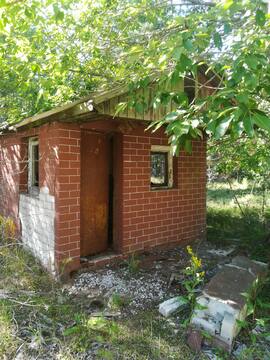
A mess of Krasnoflotskaya letters
There were interesting incidents in Soviet times with the name and geographical location of "Krasnoflotskaya"
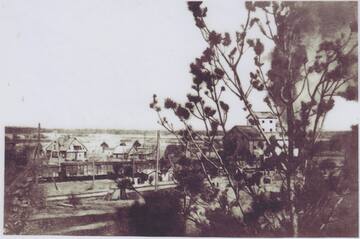
The deportation train secretly photographed near Skrunda Station in 1949
On 25 March 1949, Elmārs Heniņš, a pupil in Skrunda, witnessed his classmates being taken away. He took his camera and climbed a pine tree on a nearby hill to document what was happening, later hiding the pictures.
Life during World War II on the Kegums side
Memories of the now distant royal era flashed through. For the older generation, it would remind them of their own experiences, while for the younger generation, it might bore them.
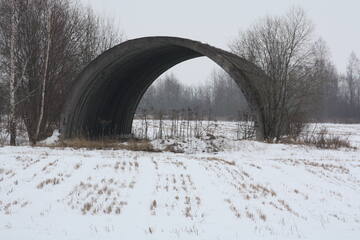
Military airfield near Tukums
The barely visible, grass-covered hangars by the highway to Tukums were home to army fighter jets during the Soviet era. Even in those days, the airfield and hangars were camouflaged, and the uninitiated had no idea about it.
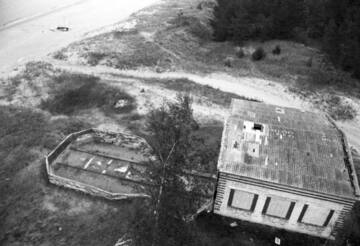
Memories of the border zone
Various scenes from life during the Soviet era, as remembered by Gunārs Anševics, a writer, prose and poetry author, while living in the border zone.
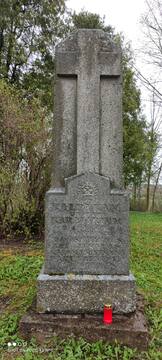
Aizporis Manor during the War of Independence
Aizporu Half Manor, Aizpute district, Kalvene municipality, is the westernmost place in Latvia to which Colonel Oskars Kalpaks' separate battalion retreated.
Halfway between Rudbārži and Kalvenė, on the side of the road, is the Aizpore cemetery. There is a monument and 12 memorials to the volunteer soldiers of Oskars Kalpaka's battalion.
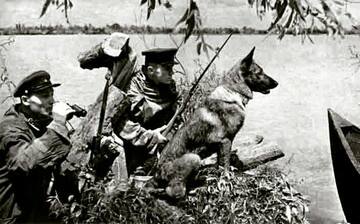
Kurzeme coast - closed area
During the Cold War, the entire Kurzeme coastline was a closed zone to the public - Soviet border guards were the main decision-makers here, with guard posts at certain distances and observation towers with spotlight stations on the beach. Civilians were only allowed on the seafront during daylight hours.
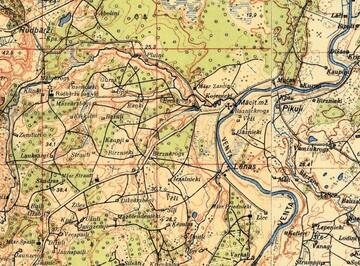
The 1st Latvian Separate Battalion crossed the Venta on March 3, 1919
One of the main challenges for the units of the 1st Latvian Separate Battalion was to cross the frozen river Venta and build a road across it.
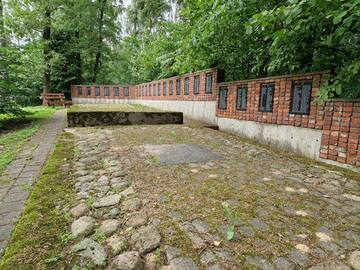
The fate of the Jews of Plungė
In the summer of 1941, almost the entire local Jewish community of more than 1,800 people was brutally destroyed in Plungė. People were imprisoned in terrible conditions, starved to death, and finally shot in the Kaušėnai forest. The mass murders were carried out by local collaborators.
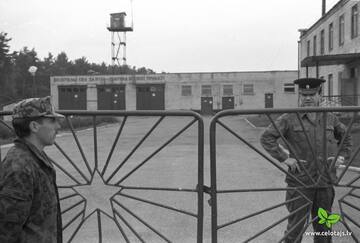
About Kolka border guards
Kolka resident Baiba Šuvcāne talks about the times in Kolka when there were border guards there.
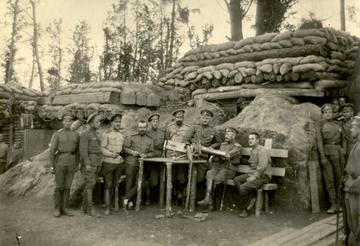
Building defensive positions.
The description examines the problems of battlefield fortification in general. It is based on the experience of World War I and the situation when it was necessary to organize extensive work on the creation of fortifications.
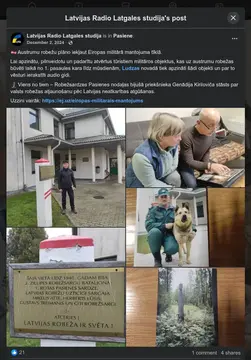
Gennady Kirillovich's story about the creation of the Latvian state border after the restoration of Latvia's independence
G. Kirilovičs' story about the establishment of the Latvian state border after the restoration of Latvia's independence (interview in audio file, in Latvian)
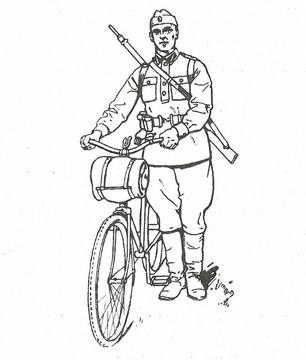
Special advice on health care for cyclists
The recommendations mentioned in the cyclist training regulations are intended for the training of cyclists in the Latvian Army. The recommendations are focused primarily on soldier health issues.
Service in Mõntu Battery No. 458
Recollections of a soldier who served in the battery
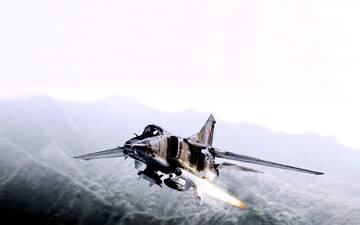
Russian military planes crash at Ledurga and Zvarde training grounds
In early 1992, two Soviet Mig-27 D aircraft crashed on one day under mysterious circumstances, 40 minutes apart, at the Lēdurga and Zvārde training grounds.
World War I trenches by Väike Strait
The war began on the islands on September 29, 1917, when the German army landed on Saaremaa near Tagalahe.
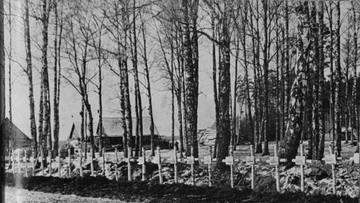
Battles in the Courland fortress near Lestene
The narrator describes his impressions of the battles in the Lestene area and the role of the Latvian 19th Division in the battles.
Unfortunate event at the Command Centre in Oriküla
According to Missile Force Major Sulev Truuväärt, an anti-aircraft missile was accidentally launched from the Oriküla division in 1967.
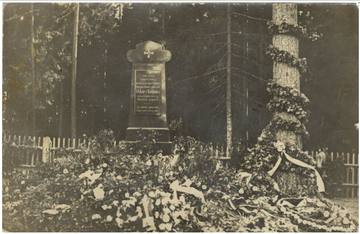
Colonel Kalpak's last battle near Airīte
Colonel Kalpaks was a respected figure in military circles and a true patriot. It was the spirit of patriotism and an unfortunate coincidence that led to the fatal clash between him and the German battalions, which unfortunately ended with the death of Colonel Kalpaks.
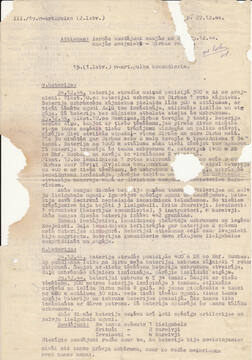
Report of Captain Jānis Ozols of the III./19. Artillery Regiment (2.Latvian) on the battles of December 24 and 25, 1944
The division commander, Captain Jānis Ozols, in his report of 27.12.1944 to the commander of the 15th (1st Latvian) SS Artillery Regiment, reports on the losses of the 7th, 8th and 9th battery guns in the battles of 24-25 December in the Zvejnieki - Dirba area.
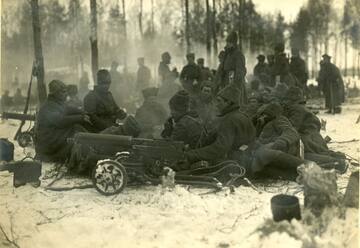
A diary entry about the moment when soldiers learn about preparations for the Christmas battles.
The Latvian riflemen and their officers were informed about the beginning of the battle at the last moment. The non-commissioned officer of the 5th Zemgale Latvian Riflemen Regiment, Rūdolfs Ivanovs, described in his diary the last evening before the start of the battle. A short, but vivid and authentic text that shows a very important moment for a soldier – learning about the day of the battle.
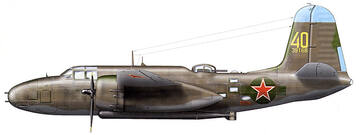
Soviet air raids on the Liepāja suburb in October and December 1944
At the end of World War II, the German forces in Courland were able to successfully defend themselves for seven months, as the German Navy maintained combat capability until the end of World War II and supplied Army Group North and later Army Group Courland. The main port was Liepaja, through which 80% of all cargo was delivered and shipped. Liepaja thus became an important target for the Soviet Baltic Navy and long-range aviation.
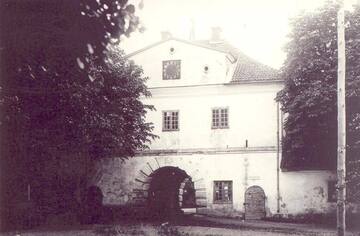
The story of 19-year-old Raisa Ahmedeyev about the reconnaissance battle on February 14, 1945 near Priekule
Bashkir-born Red Army soldier Rais Ahmadeev's (19 years old) account of the Soviet army's preparations for the attack on Priekule and the reconnaissance battle in Piekule on 14 February 1945.
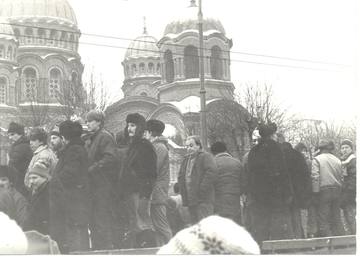
Vaidavians on the barricades
In 2020, in anticipation of the 30th anniversary of the 1991 barricades, Vismants Priedīte shares the story of the participation of local residents in these historical events.
Sklidžiai with "Neptune": MGB poison for partisans
In 1955, the partisans of Samogitia became victims of a treacherous operation by a Soviet MGB agent - honey-filled slurries poisoned with special preparations were intended to kill the freedom fighters.

How Latvian government officials fooled the Bolshevik supporters of Pampali
The former principal of the Pampāļi School (until 1959), Alfrēds Brūns, has personally typed an impressive book about the history of the Pampāļi School and historical events surrounding it, with authentic photographs. In the book, A. Brūns describes the events of the War of Independence in Pampāļi, describing in detail the events involving Latvian statesmen, Bolshevik supporters, the actions of the German army, etc.
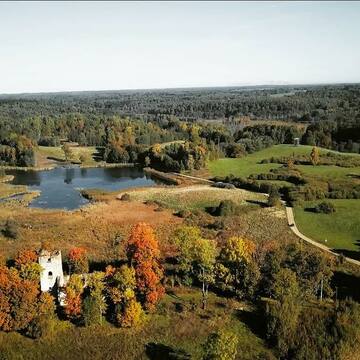
Embute Church walls - witnesses of World War II
The Embute Church is one of the most vivid witnesses of the Second World War in Kurzeme. Traces of artillery and other shells can still be seen on the church walls and bell tower. The German army used the church (like many others in Kurzeme and elsewhere) for impregnable defensive purposes. As a result, the church was destroyed and has not been rebuilt since the Soviet
Living conditions in Maantee
The military unit of the Maantee village was located almost at the end of the world, even when viewed from Kuressaare.
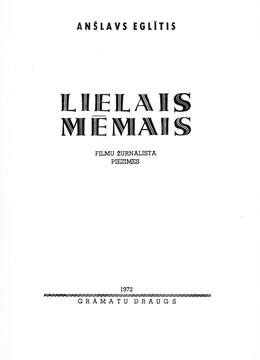
Anšlavs Eglītis's memories of the Latvian War of Independence and the events of 1919 in Alūksne
On March 27, 1919, the 1st Valmiera Infantry Regiment, together with the Estonian Guards (kaitselit) battalions of Tallinn (then Rēvele) and Tērbatas, as well as three armored trains, began the liberation of Latvia from the Bolsheviks from the banks of the Melnupe River.
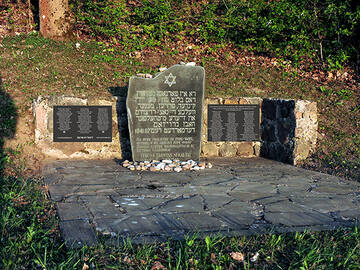
The tragedy of the Jews of Plateliai
In July 1941, 30 local Jews were murdered on Jazminų Hill in the town of Plateliai, and the place later became memorable for the tragic events that occurred there.
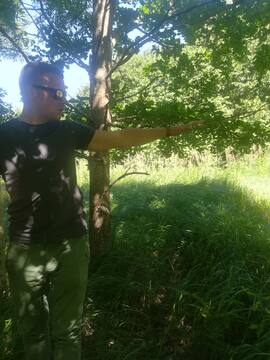
Grieze Prisoner of War Camp in 1945
In 2020, I.Kupce tells the story of her family member's father-in-law's experience in the Grieze Soviet filtration camp in 1945, after the surrender of the German army in Kurzeme.
Women's work in Soviet exile
Lithuanian exiles, accustomed to traditional female roles in interwar Lithuania, faced hard physical labor and a new reality in exile, where there was no longer a distinction between "male" and "female" work.
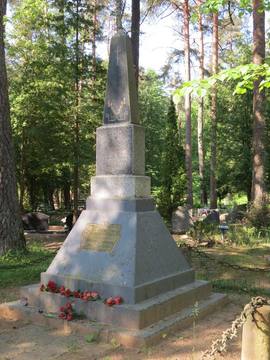
About the soldiers of the 3rd Caucasian Rifle Regiment who were shot in Jēkabpils during World War I for inciting disobedience to orders
On May 18, 1916, at 8:30 p.m. in the ruins of the Ķēģeri manor house (~7 km south of Jēkabpils, beyond Brodie), soldiers of the 3rd Caucasian Rifle Regiment were shot for inciting disobedience to orders. The execution was led by Ensign Ravņjaļičevs.
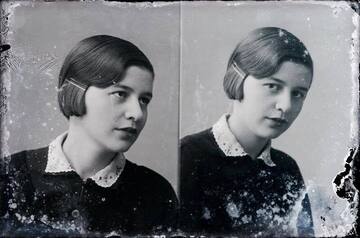
A love story that ended in war
This story tells of the love and struggle for survival of Pranas Laucevičius and Rūta Gurvičiūtė during World War II. It testifies to courage, sacrifice, and death, when the atrocities of war suppressed national boundaries, but not human feelings.
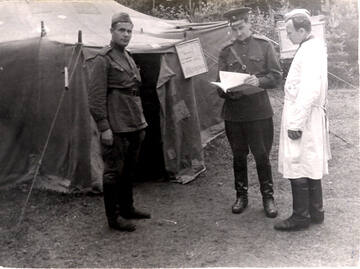
K. Meškauskas' memories of the Plungė district missile bases
The former missile bases in the Plungė district hide an impressive history of the Cold War - from the secret transportation of rocket fuel at night to the construction of underground shafts with artificial pressure. The memoirs of doctor Kajetonas Meškauskas reveal little-known details about the activities of the Soviet military and the lives of the builders. His story is not only about the base, but also about a man who found himself in the middle of history.
About the crimes of Red Army soldiers in Tukums.
In Tukums, several monuments to the Red Army were erected during the Soviet occupation. Today, they still have not lost their former, Soviet ideological goals and continue to create the myth of the Red Army as liberators. A variety of sources have survived about the crimes of the Red Army soldiers. One group of sources can be found in local newspapers, which vividly describe the permissiveness and extent of the crimes of the Red Army.
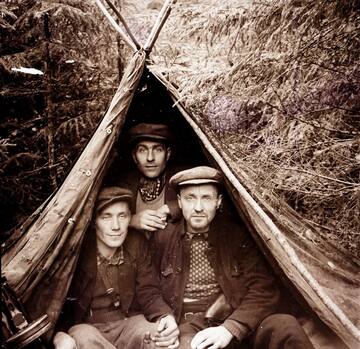
About the last Vidzeme partisan group
An incredible story about how the Chekists "surrendered" to the last partisan group in Vidzeme, asking them to come out of the forest.
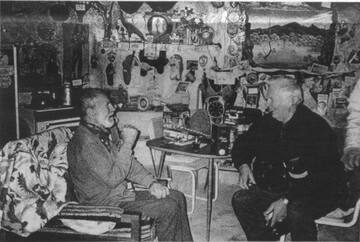
Meeting with Arvīds Blūmentāls - Crocodile Harry in Cumberpedia
The newspaper "Australian Latvian" published an article about a meeting with Arvīds Blūmentāls at his home in Australia.
(A small episode from the journey to the roots of the Australian centre and west coast together with Aivars and Benita Browne.)
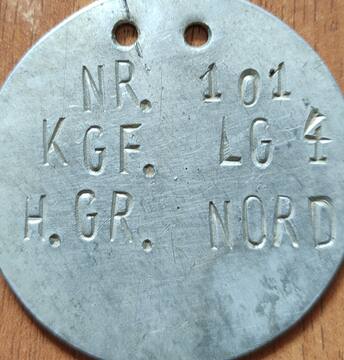
Discovery at the site of the Grieze filtration camp
Various objects belonging to former soldiers are often found at the site of the Grieze filtration camp and along the roads leading to it. Soldiers, arrested civilians, prisoners of war, etc. disposed of them for various reasons, both to avoid being identified and to avoid being subjected to "special attention".
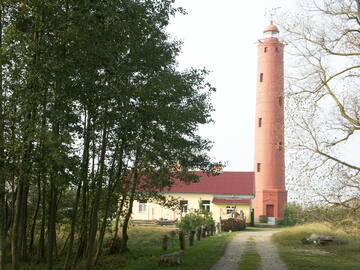
Akmeņrags Lighthouse and Shoal - one of the largest ship graveyards in the Baltic Sea
It was in the Akmensrags lighthouse area that, on January 13, 1923, the steamer Saratov , on which the provisional government led by K. Ulmanis took refuge when the independent state of Latvia was established, tragically ran aground and crashed.
Memories of the Spilve Helicopter Base
During the Soviet era, there was a helicopter base in the southwestern part of Spilve Airport. It could be clearly seen from the nearby Kleisti Forest dunes and the Riga-Bolderaja railway branch, which led to the Riga varnish and paint factory.
The Tricolor over Rebel Hill
In 1956, inspired by the Hungarian uprising, Lithuanians raised the tricolor on the Rebels' Hill - a brief but significant sign of freedom during the Soviet era.
10 facts about how the Tartu Peace Treaty came about
One of the most striking stories about the birth of the Tartu Peace is how young soldiers were ordered to march in a circle around the city in the winter of 1919/1920. It probably started when the border negotiations failed to make any progress. In 1919, the commander of the 2nd Division, Colonel Viktor Puskar, ordered the Tartu schoolchildren's battalion to march around the city in such a way that it would repeatedly pass through both Aia (now Vanemuine) Street near the conference building and Veski Street, where the Russian delegation was staying.
Memories of the Struggle for Lithuanian Freedom
Povilas Plechavičius – Lithuanian army general, famous for his battles against the Bolsheviks and Bermontites. After returning to Lithuania from Russia on 25 July 1918, P. Plechavičius settled in Samogitia and organized volunteer partisan units to fight against the Bolshevik and Bermontite forces, with whom he fought in the areas of Seda, Mažeikiai, Kretinga and Telšiai.
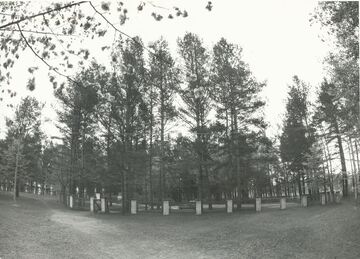
2,500 unfortunate souls ended their lives in Mažeikiai
At the end of July 1941, a mass murder of Jews began in Mažeikiai, initiated by the Germans and later continued by local white-collar criminals. People were taken in groups to the Jewish cemetery, forced to undress, and shot near dug pits. Over the course of a few days, more than 2,000 Jews from Mažeikiai and surrounding towns were murdered.
Strangulation of Bishop Heinrich III
In 1381, the 80-year-old Bishop of Saare–Lääne, Heinrich III, met his end in the castle.
Memories of the future Commander-in-Chief of the Lithuanian Armed Forces, Brigadier General Stasys Raštikis, about the Independence Struggles
The memoirs tell of his experiences of joining the army, being injured, and being a prisoner of war. The feeling of being injured and living in a war camp is authentically conveyed.
Excerpt about the coup of December 17, 1926 from the memoirs of Gen. V. Grigaliūnas Glowackis
The memoirs describe an episode when the coup plotters released Col. V. Grigaliūnas Glowackis from Kaunas prison and ordered him to join the coup.
Efforts to prevent the explosion of the Ķegums HPP
During World War II, when the armies retreated, a large number of militarily and logistically important facilities in Latvia were blown up so that these resources would not be left for the enemy. Such facilities were also in the vicinity of Ķegums, where one of the most important facilities is the Ķegums HPP, which, thanks to the efforts and efforts of its employees, was not completely destroyed.
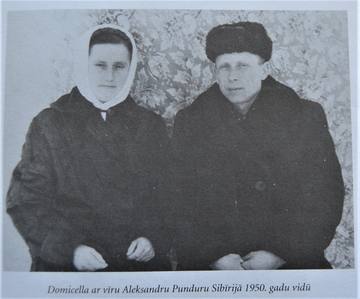
Forest Daughter Domicella Dwarf (Lucia)
Domicella Pundure is 90. On May 3, 2018, at Riga Castle, she received the Viesturas Order from the hands of President Raimonds Vējonis for special merits in the national resistance movement and the defense of the country's independence. Domicella Pundure is the last witness to the Battle of Stompaku Marsh.
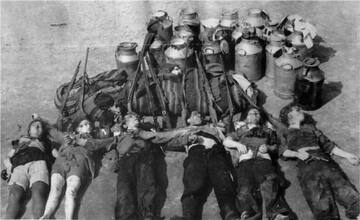
About D. Breikšs' national partisan group
The memorial site was established on the site of the former houses of “Daiņkalni” and “Graškalni” in Rauna parish, under which a group of national partisans led by Dailonis Breikšis (nickname Edgars, 1911-1952) hid in bunkers from 1950 to 1952.
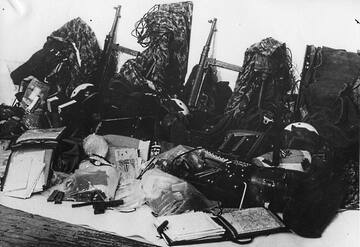
Alfred Riekstins, nicknamed "Imants", dies as a result of betrayal by a Soviet double agent
Alfred Riekstins, a Latvian legionnaire, was recruited to work with the US intelligence agency, the CIA, after World War II.
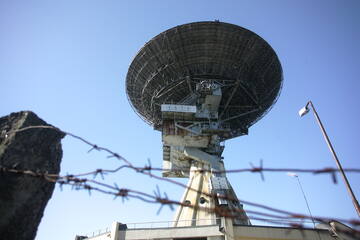
Damage to the Irbene radio telescopes
Before leaving Irbene, the Soviet army damaged all radio telescope systems
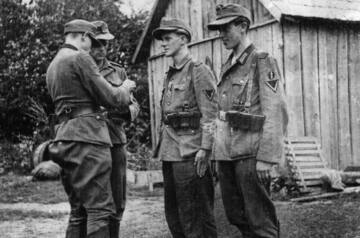
German army corporal Felker's account of the reconnaissance battle on 8 and 9 November 1944 at the Selješa home in Zvārde
Felker (German: Völcker) was a 20-year-old boy, serving in an intelligence division in the Nazi German army, who narrates the events of November 8 and 9, which vividly reflect the frontline events in Zvārde, where the frontline moved back and forth for 4 months, including in the vicinity of the Ķērkliņi church.
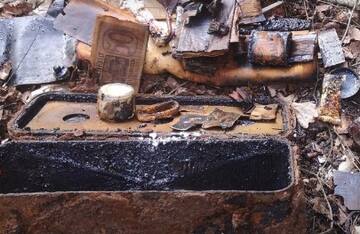
The legacy of legionnaire Andrejs Apsītis in the Remte Forest
Evidence of World War II in the forests of Kurzeme is found from time to time, as enthusiasts of war relics and historical antiquities visit the forests and fields of Kurzeme with metal detectors very often. At the beginning of 2021, in the Remte side of Saldus municipality, various documents were found in an ammunition box buried in the forest, confirming belonging to the 19th Division of the Latvian Legion, as well as the personal belongings of a soldier. They had been lying in the ground for 76 years.
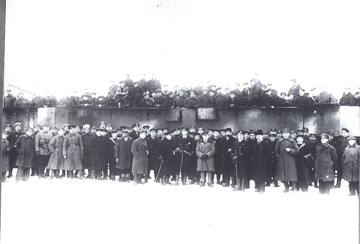
Latvian Army armored train No. 5 or "Kolpaks"
Latvian Army Armoured Train No.5 or "Kalpaks" was a light armoured train in the Latvian Armed Forces in 1919.
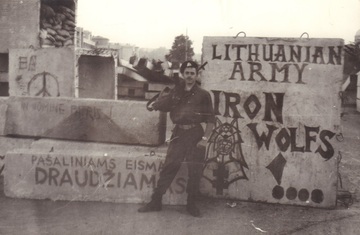
Lithuanian Volunteer National Defense Service Forces and the August Coup (1991)
The Voluntary National Defense Service of the Republic of Lithuania was established on January 17, 1991. During the August coup, the service's soldiers were entrusted with protecting state facilities. Victims were inevitable.
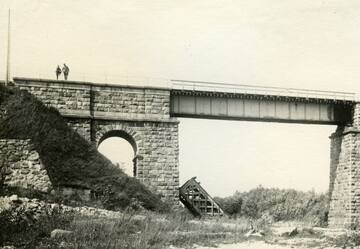
The Battle of Cēsis on the banks of the Amata River
At the bridge over the Amata, the German Landeswehr attacks an Estonian armored train that has arrived for negotiations. The Estonians open counterfire, the Germans are repulsed, and the armored train returns to Cēsis.
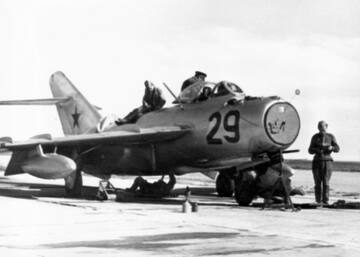
The secret of Tukums airfield
The Tukums airfield holds a secret that no one has yet solved - is there really a nuclear warhead of a nuclear missile on the airfield territory, which was dug up there by the Russian army's special services after the airfield was abandoned in the 1990s?
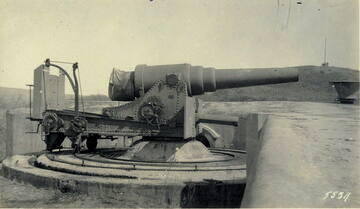
About the cannons of the Liepāja Fortress
In the northern part of the fortress was located one of the four coastal defence batteries, Battery No.1, but at the time of the fortress's liquidation its armament was not fully installed.
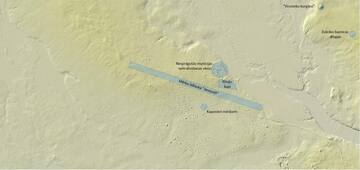
Zvardineka's childhood in the shadow of bomb explosions - Polygon Summers
Spending my childhood near the Zvārde target range, under the sounds of explosions and flying jet planes, but still sometimes on weekends I could enter the range. After the Soviet army left, the land was strewn with bomb craters and many explosive objects, not only from the range times, but also from World War II
Withdrawal of the Russian army from Lithuania in 1993.
On August 31, 1993, the last military echelon of the Russian army passed through Kena railway station, officially ending the nearly 50-year Soviet military occupation of Lithuania.

Visvalžas Brizga (Kārļa krauja) National Partisan Group
The Īle "Kārļa Krauja" Latvian and Lithuanian joint national partisan group was one of the largest resistance groups in the territory of Latvia in the period from 1947 to 1949.
Lithuanian rescuers - Miriam Javnaitė-Voronova's survival story
During World War II, Miriam Javnaitė-Voronova survived the Holocaust thanks to many Lithuanians who, risking their own lives and the lives of their loved ones, hid, fed, and cared for persecuted Jews.
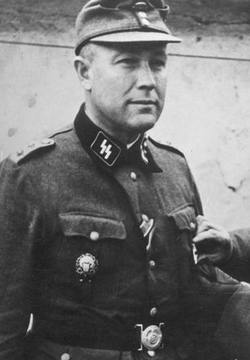
The abilities of the commander of the 19th Artillery Regiment, Captain Jānis Ozols, during the 3rd Battle of Courland
Captain Jānis Ozols was a Latvian officer, a participant in World War II, a Knight of the Order of the Three Stars, whose artillery division prevented a breach of the front during the Third Battle of Courland.
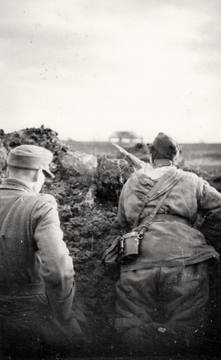
Memories of Werner Preijers, commander of the company of the 42nd Regiment of the Latvian Legion, about the battles of Courland.
The Courland Fortress was formed after the fall of Riga on October 13, 1944, and the Russian breakthrough to Klaipėda on October 10, thus cutting off land traffic with Germany.
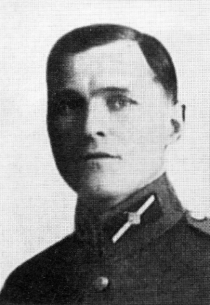
The miraculous escape of Lieutenant-Colonel Eduards Graudins from being shot
In November 1944, a court-martial of the German occupation authorities sentenced 8 staff officers of General Kurel's group, three staff officers were pardoned for various reasons. The lieutenant colonel managed to escape from being shot, but Graudiņš was "trampled" by the German concentration camp system
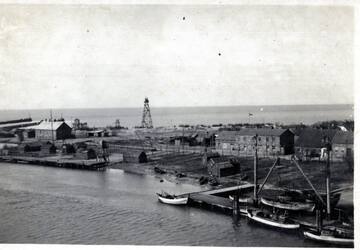
Pavilostnieki
Pāvilosta residents Aina Jakovļeva and Irina Kurčanova share their memories of the Soviet era in Pāvilosta.
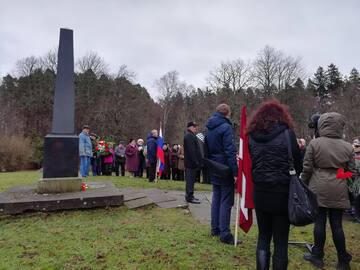
The place of the Zlēki tragedy in Latvian history is still unclear
During the Second World War, when most of Latvia was already controlled by the Soviet Union and Kurzeme was ruled by Hitler's German viceroys, the so-called Kurelians in Kurzeme started the struggle for the restoration of Latvia's state independence.
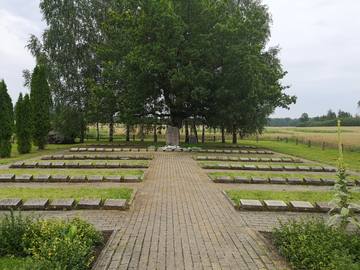
Unrecognized Soldiers. The Story of a Combat Officer.
The Battle of More is an episode of the final stage of World War II, which had a great importance in the further course of the war in the territory of Latvia. The Battle of More refers to the hostilities that took place from September 25 to October 5, 1944, on the Sigulda Defense Line in the territory of More parish. In the trenches of the Sigulda Defense Line, approximately 12 km long, soldiers of the 19th Division of the Latvian Legion, fighting heavy battles with a 10 to 15-fold superiority of the enemy for 10 days, stopped the advance of the Red / Soviet Army units towards Riga.
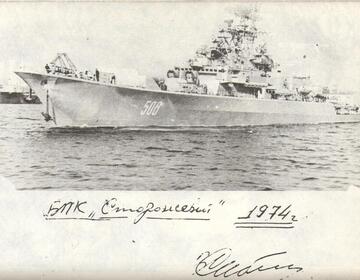
Mutiny on the warship "STOROZHEVOYA"
On 8 November 1975, as was customary in the USSR, Riga hosted another large-scale celebration of the anniversary of the Bolshevik Revolution. Nobody, even in their wildest nightmares, could have imagined that the 58th anniversary of the Revolution would go down in the history of Latvia and the USSR as something unprecedented and unprecedented - a mutiny on board the Storoževoj, a large anti-submarine ship. For 15 years, the USSR denied that a mutiny had taken place on board.
About the maintainers of order on the eastern border of Latgale – border guards and their daily lives in the period from the founding of Latvia in 1918 to the Soviet occupation in 1940.
In this story, you can learn about the people who maintained order on the eastern border of Latgale – the border guards – and their daily lives from the founding of Latvia in 1918 to the Soviet occupation in 1940.
Memories of the Kolka border zone
Kolka resident Biruta Freimane's memories of the border zone.
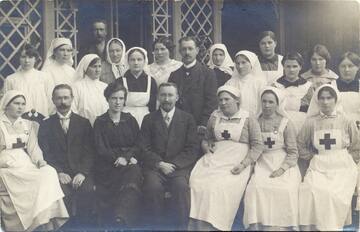
Memorial sites and burials of Kurzeme and Zemgale refugees in Cēsis
Before the First World War, 2,552 thousand people lived in the territory of Latvia. The census of 1920 registered 1,596 thousand people. This means that during this period the population of Latvia had decreased by 956 thousand people, or by 37.5%.
In the summer of 1915, German troops occupied Courland and Semigallia. More than half a million refugees left their native places in an endless stream. The first refugees arrived in Cēsis in April 1915.
The exploits of the villagers of Šarnelė
During World War II, two families from the village of Šarnelė – the Striaupiai and the Kerpauskas – despite mortal danger, saved the lives of Jews. The Striaupiai family saved as many as 26 people, including nine families, and a hiding place was set up in the forest of the Kerpauskas homestead for the family of a Jewish furrier from Alsėdžiai.
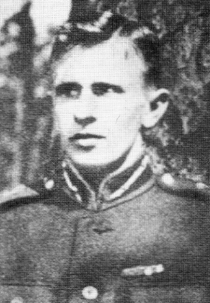
Reasons for awarding the award to Commander of the Armoured Train A.Klestrov
After successfully repelling an enemy attack, the commander of the armed train A.Klestrov falls and Colonel Danker issued the grounds for the award
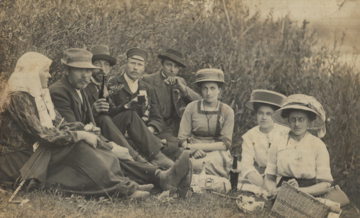
Extrajudicial shooting of civilians in Liepāja's "Blue Miracle"
Extrajudicial killings in Latvian territory during the war, in late June and early July 1941, were the last manifestation of repression and violence in the first stage of the communist occupation, which ended with the entry of Nazi German troops into the entire territory of Latvia.
The reason for the shooting was terrible and tragic – it was no longer possible to transfer the prisoners to Russia, but it was not allowed to leave them alive. As a result, during the war, extrajudicial shootings of residents also took place in Liepāja, similar to the Riga Central Prison, Valmiera Prison, Valka and Rēzekne militia, and Greizā kalns near Ludza. In Liepāja, this crime of the Soviet occupation power was carried out in the “Blue Miracle” – in the Liepāja militia building, at Republikas Street 19.
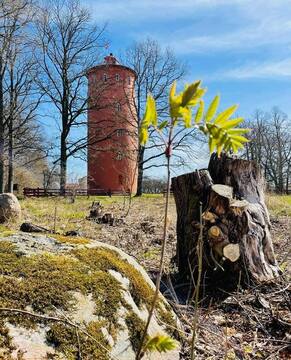
Slītere false lighthouse
During the wars, various methods were used to deceive the enemy. False navigational signs were created to deceive ships at sea, one of which may have been at the Slītere lighthouse
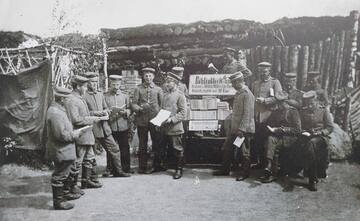
About the underground city in Egypt and the Sodiškės
In 1915, when German troops entered the territory of Latvia, the first phase of the war was characterized by a war of maneuver. In the fall of 1915, when the front stabilized at the natural obstacle of the Daugava, a war of positions began, which lasted two years - until the fall of 1917, when the German army, taking advantage of the revolutionary changes in the Russian Empire and the demoralization and collapse of the Russian army, went on the offensive.

Monuments to Lithuanian Independence. Histories of monuments created by Roberts Antinis: (I) interwar period
Around 1928, a boom in the construction of monuments to commemorate the 10th anniversary of Independence and the battles for Independence began in Lithuania, testifying to the patriotic mood of Lithuanians and their civic spirit. In this case, it is worth highlighting the works of sculptor Roberts Antinis, created in 1926–1931.
The fate of battery commander Aleksandr Stebel.
The fate of the legendary battery commander, Captain Aleksandr Stebel, is shrouded in mystery.
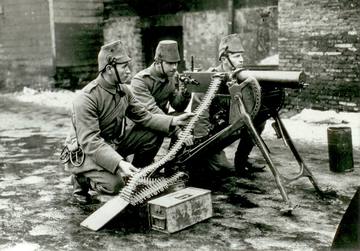
About Finnish Jaegers in Latvia
The history of the Finnish Jaegers is interesting because it is extremely similar to the fate of Latvian soldiers in World War I and their great importance in the creation of a national state. For the Finns, World War I was also an opportunity to lay the foundations for Finnish independence and the creation of its army. The source describes the event when a monument to the Finnish Jaegers is unveiled in Latvia.
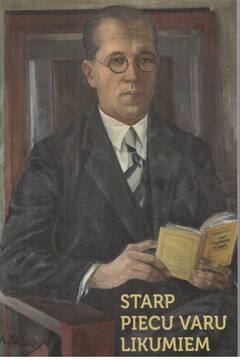
Jānis Sūnas's memories of his time spent in the Grieze filtration camp
Lawyer Jānis Sūna has published his memories of his time in the Grieze filtration camp in his autobiographical book.
Coastal battery at Olmaņi
North of Ventspils there is another important coastal battery. It was located in Olmaņi and was called "Krasnoflotskaya".
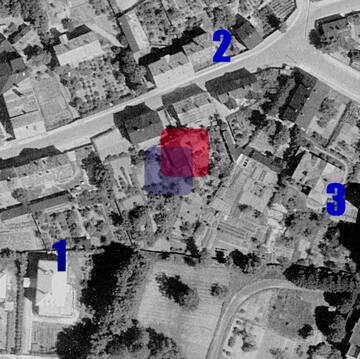
Ormaņu Street Incident
Soviet military helicopter crash in Riga, Āgenskalns, Ormaņu Street
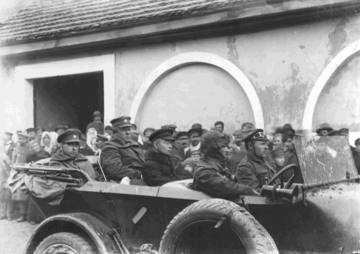
Memorial to the assassination of Kārlis Ulmanis
On April 15, 1920, an assassination attempt was made on Kārlis Ulmanis, who was the Prime Minister of Latvia at the time, while he was driving in a car in a wooded area on the Lubāna - Dzelzava highway. A memorial plaque was installed at this location between the border of Dzelzava and Indrāni parishes on August 11, 1939.
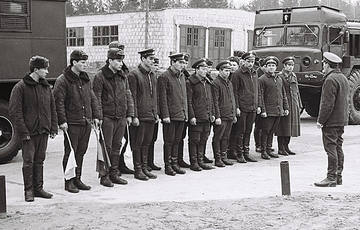
USSR army base in Marcien
The Baltics were one of the most important lines of defense for the Soviet Empire, the westernmost bastion, so the concentration of troops there was enormous. It is believed that Latvia was the most militarized territory in the world at that time. The exact number of military personnel is unknown, different sources for different times mention 200,000 to 350,000. In Latvia alone, in 50 years, 3,009 military units were deployed in more than 700 locations. One of these locations was the USSR army base in Mārcienė.

The daily routine of Latvian riflemen on Death Island
The memoirs vividly describe the daily lives of soldiers on Death Island.
How Reola was liberated
Description of the Battle of Reola in January 1919, considered a turning point in the War of Independence, during which Estonian troops thwarted the Red Army's attempt to capture Tartu.
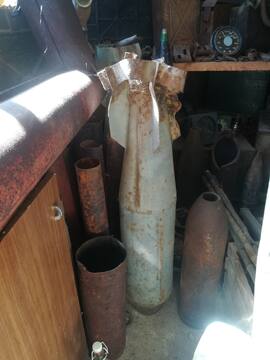
A slanderer's childhood in the shadow of bomb explosions - Phosphorus capsules
Spending my childhood near the Zvārde target range, under the sounds of explosions and flying jet planes, but still sometimes on weekends you could enter the range. After the Soviet army left, the land was strewn with bomb craters and many explosive objects, not only from the time of the range, but also from World War II. The boys especially liked to burn phosphorus capsules ...
70 years of Kalevipoeg. Will Kalevipoeg finally return home?
A story about the mood in Tartu and among students immediately after the statue of Kalevipoeg was taken down in 1950.
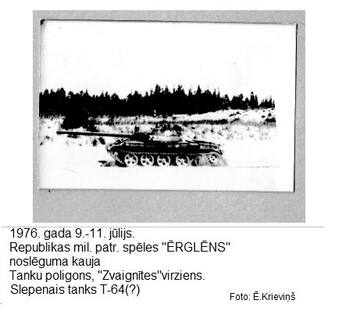
July 1976 military-patriotic games at the “Orlenok” tank training ground near Irbene
July 1976 military-patriotic games "Orlenok" at the tank training ground near Irbene, in which 17-year-old Evalds Krieviņš participated and secretly photographed the games, equipment and even the Irbene antenna with a Sme8M camera
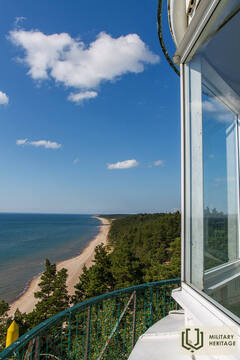
Nature photos of the Uzava coast and Soviet border guards
The story of a protected plant photo in a border guard area.
Bunker construction certificate
The diary of partisan Lionginas Baliukevičius Dzūkas describes the construction work of the bunker.
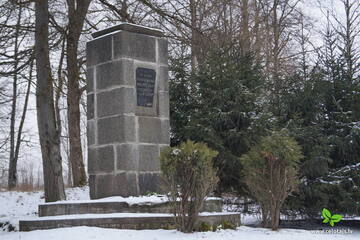
The Battle of the Oskars Kalpaks Battalion at Lielauce
On the night of January 15, the Kalpaks Battalion fought the first battle at Lielauce, repelling the Red attack. It was the first significant battle of the Kalpaks Battalion, and the victory gave the soldiers a particularly strong morale boost.
Massacre of Jewish women from Salantai in the Šateikiai Forest
In the summer of 1941, a massacre of Jewish women and children was carried out in the Šateikiai Forest, organized by the local police and white-robed militia. The victims were transported to the site of the massacre from Salantai, and before being shot, they were ordered to undress and jump into a dug pit. According to different sources, from 95 to 230 people were killed during these executions, mostly women and girls.
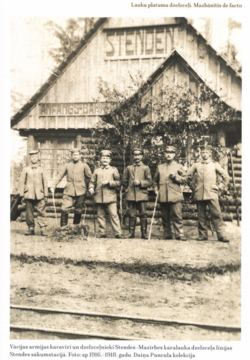
The important place of Stende station in the Karalauskas railway network
The main task of the battlefield railways in the Irbes Strait area was to provide the German army's coastal defense positions with cannons and ammunition.
If necessary, we will fight: Battle of Radviliškis with the Bermontites in 1919.
On November 21-22, 1919, fateful battles took place in the city of Radviliškis between the Lithuanian army and the Bermontinians - a joint force of Russian prisoners of war and German volunteers, which ended in a significant Lithuanian victory.
Star exhibit – armoured car
The Arsenal military factory produced Estonia's own armored cars between the two world wars. A copy of them is located in the Jõgewa Military Museum.
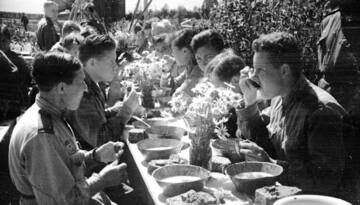
Testimony of Jūlijs Bērziņš about the 201st (43rd Guards) Latvian Rifle Division of the Red Army in 1942-1945
In the fall of 2011, I came across the memoirs of Jūlijs Bērziņš (1900–after 1963), a Latvian living in Russia and a former soldier of the 201st (43rd Guards) Latvian Rifle Division (hereinafter – the 201st Latvian Rifle Division; Division) of the Red Army – a 189-page story written by hand in Russian in two lined notebooks by a Latvian soldier about his experiences in the German-USSR war (1941–1945). These memoirs were also not commissioned work.
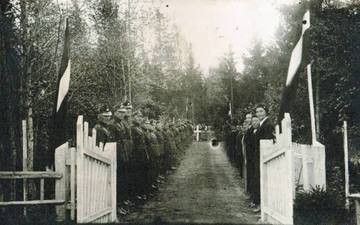
Battle of the Finnish Volunteer Regiment "Northern Boys" in Beja
On February 23, 1919, a reconnaissance unit of the Finnish volunteer regiment "Boys of the North", hoping to obtain additional weapons and ammunition, arrived at the Beja School ravine, where a clash with the Bolsheviks took place (Battle of Babecka). 10 soldiers of the Finnish regiment fell in this battle.
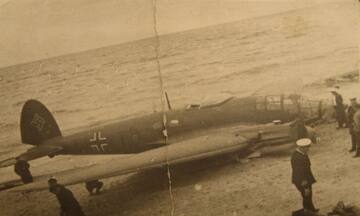
Karosta – the landing site of a German He-111 on the beach of Liepāja in 1939
On 11 September 1939, a German Henkel He-111 bomber was raiding Polish cities when it went off course at night and made an emergency landing on Liepāja beach. This event is recounted in the memoirs of Vilis Zobens, a Liepaja resident and a liaison company officer of the Kurzeme Division. The landing site is not marked in nature. The approximate coordinates are N 56.59368° E 21.01598° - on the beach near the Northern Forts.
Memoirs of military doctor Col. Kenstavičius from the Lithuanian Wars of Independence
The memoirs convey experiences from the Lithuanian Army military hospital operating in southern Lithuania, during battles with the Polish army in Suvalkija.
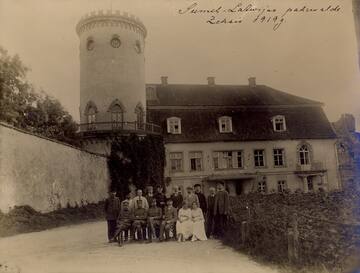
Cēsis New Castle – walls that created the security of the Latvian state and still protect identity documents
The Cēsis New Castle was built on the ruins of a military fortification – a medieval castle. However, this is not the only military significance of the building.
Lõpe-Kaimri defence line
On September 16, 1941, in connection with the successful offensive of German troops in Muhu and Saaremaa, work began on establishing a defensive line in the area between the villages of Lõpe, Teesü and Kaimri.
About the construction of the Stebel battery
Building the battery was enormously expensive.
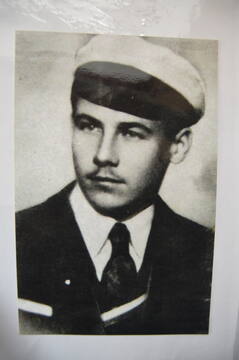
Pēteris Supe - initiator of the establishment of the Latvian National Partisan Association
From 1944 to 1946, Pēteris Supe managed to unite the national partisan units scattered in the forests into an organized movement, which continued to fight against the occupation of Latvia in Abrene County for several years after World War II. Pēteris Supe, nicknamed “Cinītis”, was one of the most outstanding organizers and leaders of the national partisan movement in Northern Latgale.
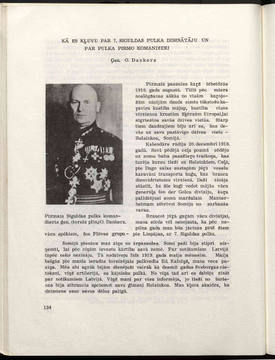
7. Formation of the Sigulda Infantry Regiment
On June 20, 1919, the 7th Sigulda Infantry Regiment began to be formed in Naukšēni Manor, near Rūjiena, according to the order of the commander of the North Latvian Brigade, Colonel Jorģis Zemitāns. Initially, a small combat group consisting of 22 officers and 1,580 soldiers was formed from the reserve battalion of the North Latvian Brigade, which, in honor of its first commander Oskars Danker, was named the Danker Division. A few days later, the division was included in the 2nd Battalion of the 3rd Jelgava Regiment, and on August 23, with the addition of a company, it was included in the 7th Sigulda Infantry Regiment.
One day in a partisan bunker
The diary of partisan Lionginas Baliukevičius Dzūkas writes about life in a partisan bunker, and this story reveals what a day in the partisans' lives was like.
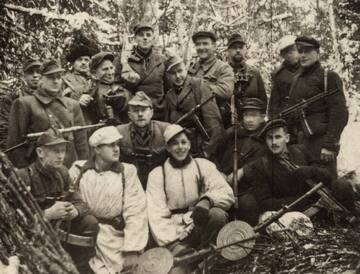
The activities and destruction story of the Peter Cheevers group
P. Čevers gathered around him former officers of the legion, and also accepted local residents of Kurzeme into the group. They all chose to remain faithful to the idea of a free and independent Latvian state, rather than submit to a foreign occupying power. Čevers' group deployed in the territory of the Vandzene - Upesgrīva - Okte parishes of Talsi district, trying to avoid frontal clashes with Cheka troops or fighters of the destroyer battalions.
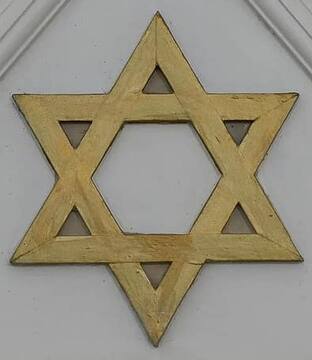
Star of David at the Dundaga Concentration Camp Memorial Site
After regaining independence, the residents of Dundaga erected a large wooden Star of David at the site of the murder and reburial of Jews near the Mazirbe-Dundagas road, and later the Council of Jewish Congregations and Communities of Latvia also unveiled a memorial stone next to it.
Krakių bunkeris: dviejų partizanų žūties vieta
On January 7, 1951, two partisans from the Samogitian region - Albertas Švažas-Vanagas and Pranas Šiuipys - were killed in the Jonuškiai forest bunker. Half a century later, the Mažeikiai riflemen rebuilt the bunker and immortalized the memory of the fighters.
Botanist's work on the seashore
While performing his duties as a botanist, he was only allowed to walk along the coast with a border guard.
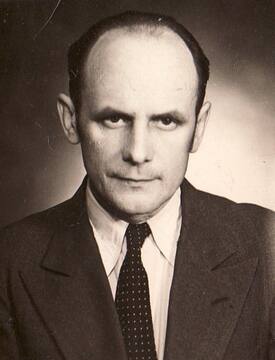
The secret and dangerous activities of Valdemārs Ģinters
Valdemārs Ģinters' name was the last hope for many Latvian refugees to escape to Sweden. Too much attention from the refugees was dangerous, and therefore Ģinters kept it a secret.
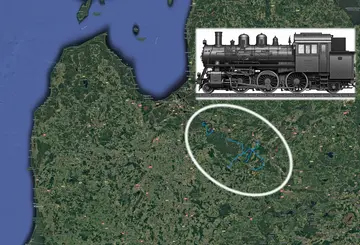
600mm narrow gauge railways in Sēlia
It is often said that war is the father of all things, and that has literally been the case with the Latvian rural railways. Any army, whether attacking or defending, requires considerable resources to ensure warfare. When the German army entered the territory of Latvia in 1915, it faced supply challenges. By the end of 1915, the front had stabilized along the Daugava line. Historically, the population density in the territory of Sēlija was low, and therefore there was no extensive network of transport routes.
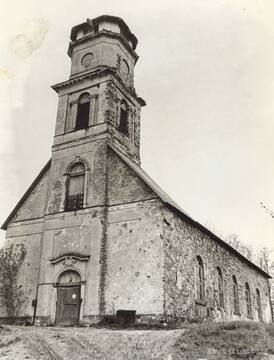
How Red Army soldiers burned down the Remte Church
After the capitulation of Germany and Army Group "Courland" on May 8 and 9, 1945, the victors celebrated their victory in various ways in many places in Courland. In Remte, the Remte church was burned down during these celebrations. The church bell ringer's family kept the church bell in their homestead throughout the occupation.
About Pranas Beleckas-Milner and the fateful battle at Gudai Mill
Pranas Beleckas-Malūnininkas, a former non-commissioned officer of the Lithuanian Army, became famous as the brave commander of the Vytis detachment of the Šatrija detachment of the Samogitian region, under whose leadership the partisans organized a daring attack near the Gudai mill.
The Battle of Rannu and collected texts from the area – reasons to be proud of Rannu
On the Battle of Rannu and its connection to the work "Names on a Marble Tablet".
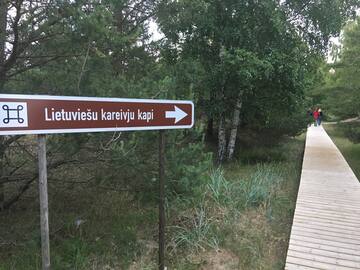
Compassionate Lithuanian Coastguard men
More than 70 years ago, Lithuanian coastguards were executed for helping their neighbours, Latvian boat refugees, to reach Sweden. When the German occupation authorities found out about this, they brutally
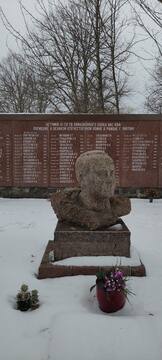
The story of the dismantled monument to the commander of the 67th Rifle Division of the Red Army, N. Dedayev
To the north of the South Fort is the largest cemetery in Liepāja - the Central Cemetery. In the southern part of the cemetery there is a Red Army cemetery, where Soviet soldiers who died in the vicinity of Liepāja are reburied, including the commander of the 67th Rifle Division, Major General Nikolai Dedaev, who led the defence of Liepāja in June 1941.
Hunting in Saaremaa
A world-famous Soviet and Russian small arms engineer visited Saaremaa.
Management of the Tukums reserve airfield in the 1990s.
With the departure of the Soviet occupation troops, the looting of many former military bases began. Soviet soldiers tried to take out as much as possible and leave the infrastructure in a degraded state. After the troops left, civilians continued to loot these bases and exploit the former military infrastructure.

Consecration of the Finnish Jaeger flag at Liepāja Holy Trinity Cathedral
The first flag of the Independent Finland was consecrated in 1918 in Liepaja, at the Holy Trinity Church, where the Finnish Jägers took an oath of allegiance to the legitimate government of Independent Finland before going home.
Bloody floor in the basement of the Telšiai KGB
The memoirs of prisoners of the Telšiai KGB prison reveal horrific conditions of detention - from physical torture to inhuman living conditions in overcrowded cells.
Memoirs of a soldier of the Panevėžys Regiment about the everyday life of war
Anonymous memoirs of an infantryman, published in the Lithuanian Riflemen's Union magazine "Trimitas", describing battles and military life during the Wars of Independence.
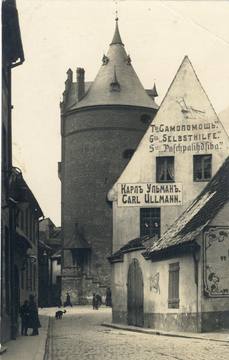
Memories of the beginning of the creation of the War Museum
The narrator describes the circumstances under which the War Museum was established. The problems and the work of creating collections are mentioned.
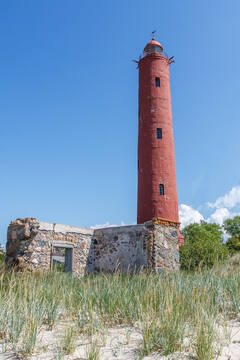
"The Latvian SSR NPP will be here!"
Memories of Andris Zaļkalns (born 1951, Chairman of the Council of People's Deputies of the village of Vērgale (1982-1989)) about the time when a nuclear power plant was almost built in Akmeņrags.
The Battle of Seda: A Story of Flight and Death
The 1944 battles near Seda experienced not only heroic moments, but also episodes of panicked running, when soldiers, seeing the impending threat of defeat, tried to save their lives.
The end of summer 1944 in Kaunas
It tells the story of the Red Army's approach to Kaunas and the withdrawal of the German army in the summer of 1944.
Memoirs of Antanas Andriuškevičius, a volunteer in the struggle for independence, joining the Lithuanian Army
The memoirs represent farewells to family members, trips to a military unit, and experiences of the first days in the army.
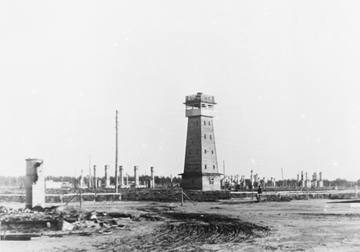
About the Salaspils Memorial as a symbol of the ideology of the Soviet occupation regime.
The description vividly describes the extent to which the memorial site is politicized and its role in the ideology of the Soviet Union. The text mentions that one of the main goals is the fight against the “rebirth of fascism”. This indicates that efforts continue to use the ideological infrastructure to hide the crimes of the communists and prevent the opinions of those who think differently. Memorial sites, Soviet army cemeteries and museums, and various cultural events maintained the myth of the “liberation of Latvia” and the “fraternal Soviet Union”. The facts of Nazi crimes were used to create a distorted view of the events of World War II in Latvia.
The last battles near Seda
On October 7, 1944, one of the last major battles of the regular army on Lithuanian territory took place near Seda, where volunteers of the Homeland Defense Team joined the fight against the Red Army, defending the freedom of Lithuania.
The man who saved the persecuted
Bronius Gotautas, known to the people as Broliuk, risked his life during and after World War II to save persecuted people - both Jews, Lithuanian nationalists, and Russian soldiers.
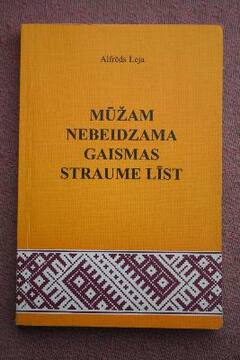
Memories of Alfred Leja, a poet
Memories of the former Aivzvīgīk Alfrēdas Leja from the book "An Endless Stream of Rain Falls Forever".
Aizvīķi and its residents also suffered greatly in the mills of the superpowers of World War II.
Alfred Ley writes in his memoirs:
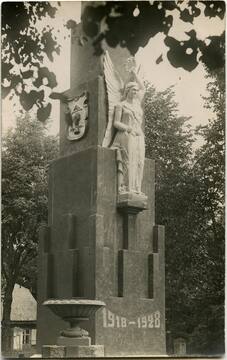
The Scandalous Freedom Monument
The Freedom Monument, built in Plungė in the late 1920s, caused a scandal in the religious community due to the figure of a naked woman, which was supposed to symbolize Freedom, but became the subject of endless controversy - both on ethical and quality issues.
The Estonian Navy assists Latvian forces during the War of Independence
On June 23, Estonians celebrate Victory Day, thus marking the joint Latvian-Estonian victory in the Battle of Cēsis. And in this victory, the Estonian Navy played a significant role, which in this Landeswehr war, as the Estonians call it, with its courageous actions and accurate cannon fire at the mouth of the Daugava threatened the main supply routes of the German forces across the Daugava in the immediate vicinity of Riga.
Sääre Coastal Defense Battery No. 43
As early as 1907, Russia began making preparations to develop forward defensive positions for its capital, St. Petersburg.
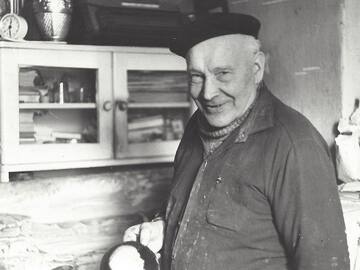
Memories about Žanis Lipke
The Soviet occupation was followed by the German occupation. The Nazis committed crimes against the inhabitants of Latvia. One of these ethnic groups was the Jews. Initially, ghettos were established, but then the extermination of the Jews followed. Many Latvians saved the Jews from extermination. One of them was Žanis Lipke.
Šilėnai bombing range
During the interwar period, a bombing range operated in the Šilėnai marshland near Šiauliai, where Lithuanian Air Force bombing and shooting exercises were conducted. The concrete observation towers that have survived to this day remind us of the existence of this range.
One day in a partisan bunker
The diary of partisan Lionginas Baliukevičius Dzūkas writes about life in a partisan bunker, and this story reveals what a day in the partisans was like.
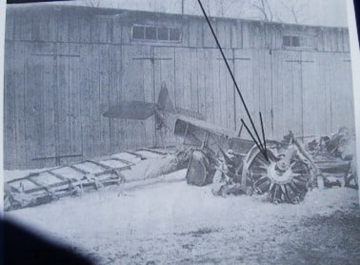
About the grave of the downed pilot
In the First World War, new technical means were used on a massive scale (machine guns, poison gas, tanks, submarines, artillery barrage tactics, flamethrowers, combat aircraft), which reached an unprecedented level of human casualties. It is said that the last knightly battles were fought in the air, because mutual respect and unwritten rules reigned among the pilots. At the beginning of the war, when the planes were not yet equipped with weapons and flew on observation missions, the pilots of the opposing sides even greeted each other in the air. Later, however, the opposing side would inform the opposing side about the downed or captured enemy pilots by flying to the enemy airfield and dropping a note in a sandbag or even a report from the captured pilots.
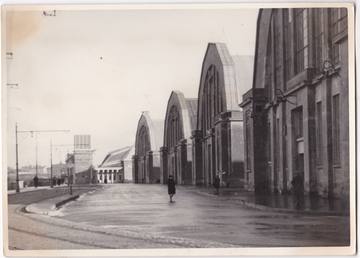
Riga Central Market hangars
At the time when Riga Central Market was built, it was one of the most modern markets in the world. It was built using the metal structures of the German army airship hangars of World War I as a basis. The author describes the prerequisites for the construction of Riga Central Market and the scope of the construction work, making it one of the most ambitious structures in post-war Latvia and one of the most modern markets in the world.
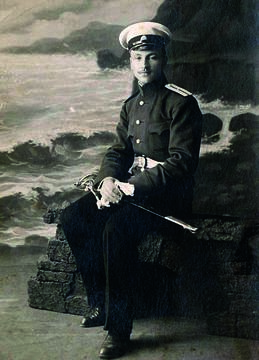
About the national patriot First Lieutenant Vili Gelbi
The fate of Lieutenant Colonel Vilis Gelbe (1890-1919) reflects the difficult situation in the formation of our state and army, as well as the assessment of these events.
With the proclamation of the Latvian state on November 18, 1918, the Latvian War of Independence and the work of building the armed forces began. In the first ranks of the Latvian volunteer soldiers was the naval lieutenant Vilis Gelbe, who was born in Courland.
Legend of the walled-in knight
According to legend, a Russian engineer who drew up a plan for the convent building in 1785 found a walled-in cellar in the eastern corner of the castle's courtyard.
The story of the death of Capt. Romas Marcinkus, who served in the British Air Force
The story tells the story of the escape from a concentration camp and the death of Capt. R. Marcinkus, who escaped to England and served in the British Air Force.
Escape attempt from the USSR
Young people and foreigners unfamiliar with Soviet times will find it difficult to believe that it was practically impossible for a Soviet citizen to legally leave the USSR.
Undva Military Base
On August 22, 1940, 594 hectares of land were allocated on the Tagamõisa Peninsula for the construction of Soviet military base No. 32 (Undva).

About the Kolka Coast Border Guards
Kolka resident Valija Laukšteine's memories of the times in Kolka when there were border guards.
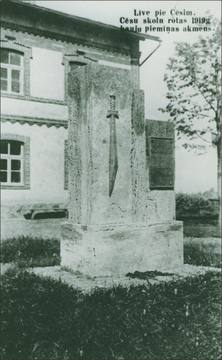
The monument dedicated to the Cēsis Regiment student detachment near the former Livu Parish Hall
The Cēsis Regiment volunteer schoolboy company participated in the 1919 Cēsis battles, which formed as a combat unit from 108 young people from Valmiera and Cēsis schools on June 5 in the premises of the Cēsis Progymnasium. Already on the night of June 5 to 6, about an hour after midnight, there was an alarm and the company was ordered to move to positions. The company moved to the Mācītājmuiža - Meijermuiža line, which was considered the most important battle area.
In the first battle, several schoolchildren were wounded, but Edgars Krieviņš, a Valmiera native, died on the same day from a very serious wound to the stomach. He was buried with military honors at the Valmiera City Cemetery on June 13. Edgars Krieviņš was posthumously awarded the Lāčplēsis War Order.

The Baltic Way: for memory and study
The Baltic Way, which took place in 1989, continues to receive attention even more than 30 years after the event. New monuments are being built, commemorations and exhibitions are being organized. One of the initiatives is the inclusion of the documentary heritage of the Baltic Way in the UNESCO International Register of the Memory of the World.
Memories of Sulev Truuväärt
Major Sulev Truuväärt, an islander who served in Dejevo, recalled that during his time, one soldier was killed in the unit.
Monument to the Liberators of Southern Estonia
A list of materials and costs used to make the memorial.
About the Latvian War of Independence and the events of 1918 in Alūksne
In 1918, when German troops entered Alūksne, the Latvian rifle battalions retreated to Soviet Russia. By the beginning of December 1918, a German regime was established and reorganizations were carried out. After Germany surrendered in the war, the Bolsheviks returned to Alūksne and restored their power. Finnish volunteers also fought as part of the Estonian army in the Latvian War of Independence. On February 21, 1919, fierce battles took place between the Bolsheviks and the Finnish volunteer regiment “Northern Boys” in Alūksne, near the station.
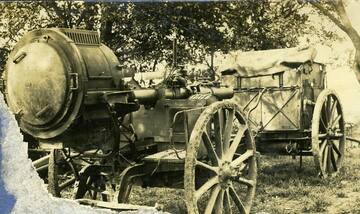
Spotlight decoration in Medumos
In the autumn of 1915, the front line stabilized. The positions of the Russian Imperial Army passed through Medumi. The 250th searchlight division of the searchlight company was also stationed in Medumi. The exact location of this division in the village of Medumi has been determined.
Recollections of the famous blacksmith of Muhu
Andrus Müüripeal (1877-1945) or Puka Andrus from the village of Lepiku, Puka, was a famous blacksmith in Muhu before the war.
A priest's story about joining the Lithuanian army
Memoirs of a priest and future volunteer, who tells the story of joining the Lithuanian army and his first experiences of military service.

The feat of Hero of the Soviet Union - Lieutenant Jakob Kunder of the 8th Estonian Corps
The heroic actions of fallen officer Jakob Kunder of the 8th Estonian Rifle Corps of the Red Army ensured the successful assault of the battalion, but he himself was killed, and a monument has been dedicated to Jakob Kunder at the site of his fall and a monument has been erected at the Tuškis Brothers Cemetery.
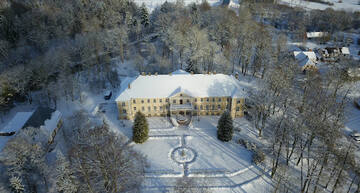
General Ridiger von der Goltz's visit to Rudbārži in February 1919
In February 1919, after a successful anti-German campaign in Finland, German General Ridiger von der Goltz was appointed commander of the German armed formations in Courland and Northern Lithuania, including the Landwehr, which included the 1st Latvian Battalion. During his visit to the front in February 1919, he also arrived in Rudbārži. Lieutenant Jānis Ķīselis, the battalion's special task officer, described the General's visit in his memoirs.
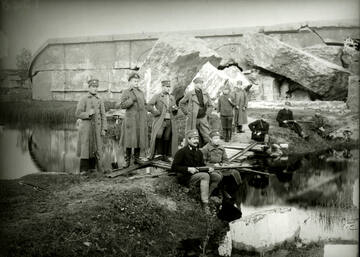
Battle of Redan in November 1919
Donāts Pudulis was a sergeant of Liepaja Military Port Commandant's Office, who received the Order of the Battle of the Battle of the Bulge for bravery and valour on 14 November 1919, when after the enemy attacked Redāns Fort, he took over the command of the commandant's company from the mortally wounded Lieutenant Commander Robert Radziņš and in a swift counterattack drove the enemy out of the fort, taking 8 prisoners and 2 working machine guns. His life up to the Battle of Liepaja is interesting. He volunteered for the Siberian Rifle Regiment in 1911 at the age of 16. In 1914 he took part in the battles against the German army at Warsaw, Lodz and elsewhere on the Polish front, and later in the battles against the Austrian army. In 1915 he sailed to France via Vladivostok as part of the Russian Expeditionary Corps and fought for 4 months at Verdun. At the beginning of 1917 he joined the Latvian Rifle Regiments, and on 7 April 1919 - the Latvian Armed Forces in Liepaja.
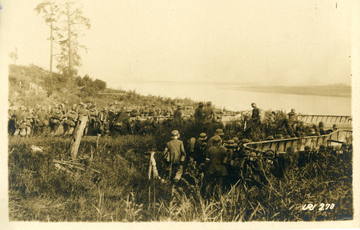
Battle of the Little Jugla River/ Riga Operation
The narrator describes his impressions of the beginning of the Riga operation, when the German army artillery begins shelling the Russian army positions. He describes the chaos that prevails in the Russian army and the mood of the Latvian riflemen before the battles.
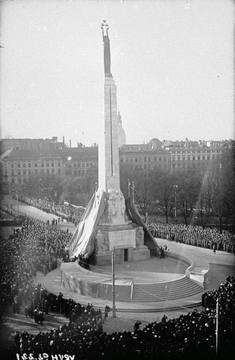
Karlis Hall and Freedom Monument
The narrator describes the memories of Kārlis Zāles as a personality who created the most famous works of Latvian art. The description is dedicated to the memory of Zāles in 1942 (the year of K. Zāles' death). The memories were chosen to characterize K. Zāles' works based on the author's personal characteristics and perception of the world.
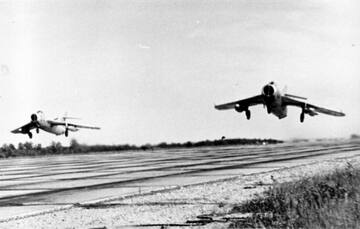
Were nuclear warheads buried at Tukums airfield?
Former guard commander Aivars Skurstenis has come forward for an open conversation with the Tukums district newspaper “Neatkarīgās Tukuma Ziņas”. He was once a reserve officer and a field guard, who in 1993 was offered a position as a guard at the agricultural company “Durbe” led by Laimonis Mucenieks. There, he had to guard an office – the Līvāni house. That is how the story begins.
Monument to the War of Independence in Mustjala
The Mustjala War of Independence Memorial was a memorial stone during the Republic of Estonia.
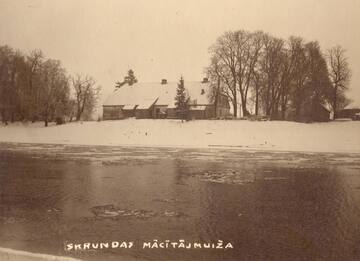
Battle of Skrunda School on January 22, 1919
Memories of Lieutenant Commander Jānis Ķīselis about the battles at Skrunda School on 22 January 1919
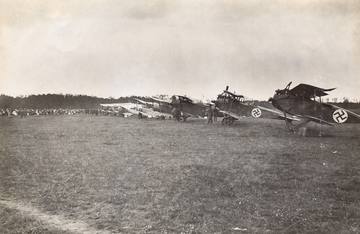
United Aviation Day - a true national holiday
The narrator describes one of Latvia's most popular and widely attended events – the Aviation Festival in Spilve. He describes the course and scope of the festival. He emphasizes the popularity of aviation in Latvia.
Partisanship on the Lithuanian-Latvian border
It tells the story of the life of partisans in winter, their wandering between Lithuania and Latvia, and the care of wounded partisans.
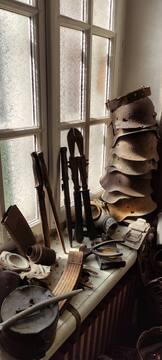
About the found war artifacts
In modern Latvia, the collections of various museums are also supplemented by the personal collections of private individuals, which are often publicly exhibited and are available to everyone. Many people have a hobby of old things, including items related to military history. Often, visitors have no idea about the origin of these things. Did they suddenly appear? In all cases, it is the work of several years and an interesting, personal story about one person's interests in collecting things in order to create, for example, a museum from them. The narrator describes his personal experience, giving the reader an idea of the situation in Latvia after World War II. The legacy left by various armies and the lack of necessary raw materials on the farm force people to find creative ways to use practically anything in order to survive. Over time, what is useless on the farm becomes valuable, historical exhibits that tell the story of the experience of Latvia and its people.
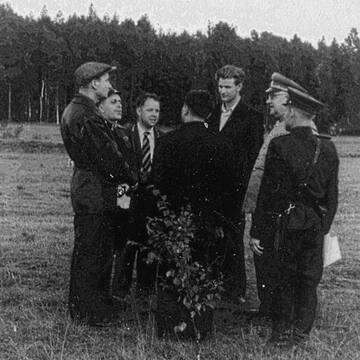
USSR double agent - Edvīns Ozoliņš nicknamed "Pilot"
The Cold War intelligence and counterintelligence battles between the West and the USSR involved agents from both sides and double agents. Since the 1920s, the Soviet security services had developed a completely new means of protecting the regime: disinformation. A term that was previously unknown in the West.
Friendly Ragaciems border guard
As the time of change approached in Latvia, the coast guard also became friendlier.
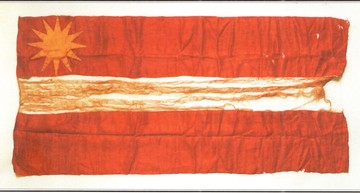
Jānis Lapiņš and the first draft of the red, white and red flag of Latvia
The creation of the Latvian national flag took place during the First World War. In 1915, when creating the flags of the Latvian rifle battalions, individual artists proposed red, white and red colors for the flag designs. After the design of the educator and journalist Jānis Lapiņš, the red, white and red flag was made in the second half of 1916 by his student, a teacher at the Valmiera refugee shelter, Marianna Straumane. This is the first known and actually made Latvian national flag, which has also survived to this day.
The sinking of Latvian merchant ships during the evacuation of Tallinn at the beginning of World War II
As German forces rapidly approached Tallinn, a massive naval operation to evacuate Tallinn took place. During this operation, many ships and their crews, along with the people on board, were killed in minefields, air attacks, and coastal artillery fire.
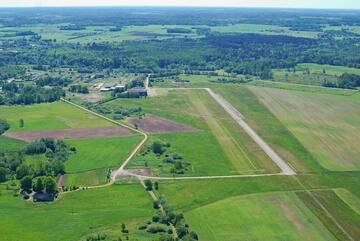
The story of Cīrava airfield
Cīravas airfield – established during World War II, used as a DOSAAF airfield by the Soviets, currently used for agricultural purposes and recreational trips, and Soviet-era aircraft can be viewed in the hangar
Summary of Petras Tarasenko's book "Lithuanian Struggle for Independence" from 1925
The book excerpt presents a chronological sequence of the battles of the Lithuanian army against the Polish army in 1920, describing the most important events and their assessments.
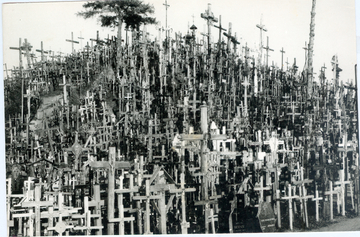
The demolition of the Hill of Crosses: evidence of the most active destruction
During the Soviet era, the Hill of Crosses was destroyed by the Soviet authorities several times, one of the organized demolitions took place in the second half of the 20th century, when, on the instructions of the party, about 300 men were mobilized to carry out this work, and the process was carefully planned and coordinated.
Memories from a diary left behind - serving at the Ķegums HPP
Jānis Jaunozoliņš. “Memories from a Diary Left Abroad” (16.08.1944.-13.10.1946.) Fragments.
Memories of the KGB cells in Tartu
Ülo Raidma, a member of the student resistance organization Blue-Black-White, reminisces about his time spent in the cells.
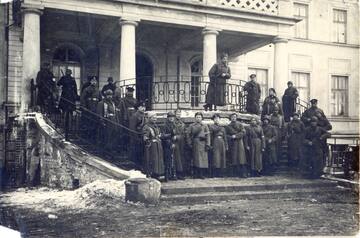
The heroism of Colonel Oskars Kalpaks in the Battle of Skrunda
Colonel Oskars Kalpaks won the respect of his soldiers by his personal example and encouragement.
Actor Harijs Liepiņš's memories of his service in the German army
The later popular actor Harijs Liepiņš was drafted into the German army and sent to Ķegums in the fall of 1944.
“Wind. Spite. And the Livonian flag.” (fragment) - Ghost Ships and Barbed Wire
Gunta Kārkliņa's memories of the Soviet era on the Livonian coast - how did the boat cemetery come about there?
The Last Battle in the Swamp Forest
On August 13, 1949, a fateful battle took place in Radviliškis County, in the Užpelkiai Forest, during which Bronius Liesys-Naktis, a member of the Presidium of the Lithuanian Communist Party Council and a signatory of the February 16 Declaration, was killed, along with other partisans from the Prisikėlimų district.
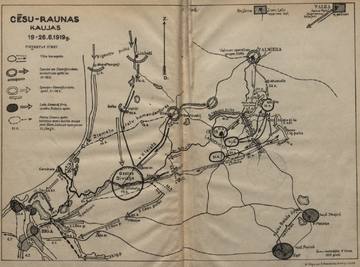
The beginning, course and conclusion of the Battle of Cēsis
The victory in the Battle of Cēsis was destined to become a turning point in the Latvian and Estonian struggle for the independence of their country. This victory put an end to the plans of the Andrievs Niedra government and the German general Rüdiger von der Goltz to conquer the Baltics. Instead, the Latvian Provisional Government of Kārlis Ulmanis resumed its activities in Liepāja.
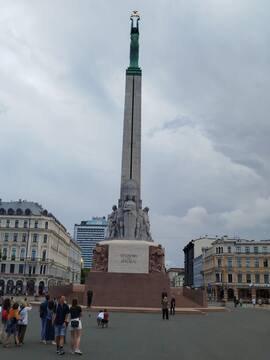
The fate of the Freedom Monument during the Soviet era
During the Soviet occupation, the Soviet authorities wanted to dismantle the Freedom Monument, but legend has it that Soviet sculptor Vera Mukhina advocated for the preservation of the monument, emphasizing its artistic and emotional value to the Latvian people.
Night Battle of Tehumardi
On the evening of October 8, in the dark, advancing Soviet and retreating German troops met near the village of Tehumardi.
Text of the Partisan Oath
Lithuanian residents, when becoming partisans, swore an oath according to this text.
Kurmaičiai Bridge: a place of war ghosts
In the Mažeikiai district, in Kurmaičiai, the railway bridge over the Venta River, built in 1904-1905, became not only a strategically important object during the war, but also a place about which mysterious stories about the ghosts of soldiers and inexplicable phenomena circulate.
Kogula airfield on Saaremaa
The construction of the Kogula Air Force Base began in August 1940.
A nine-year-old's journey into exile
Writer Regina Guntulytė-Rutkauskienė, who was exiled at the age of nine, remembers the deportation of June 14, 1941, when she and her family were taken to Siberia. Her story reveals not only the physical but also the emotional pain of exile, which accompanied her even after returning to Lithuania.
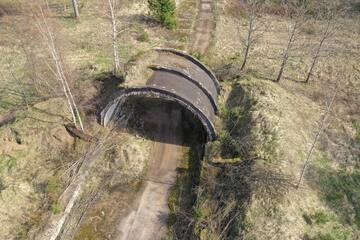
In the footsteps of nuclear weapons in Šateikiai Forest
In the period 1960-1978, in the forests of Šateikiai village, in the Plungė district, a ground-based missile launch base operated, where medium-range thermonuclear missiles R12U were deployed. After the missiles were transported, the 384th High-Power Artillery Brigade was deployed at the base. At its disposal were self-propelled 203 mm caliber howitzers 2S7 "Pion" and a variety of other weapons, which cost lives.
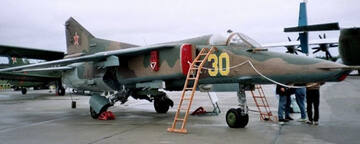
Mig-27D aircraft crashed at Zvārde training ground and in Lēdurga
In early 1992, two Soviet-made Russian "war" planes crashed on one day, 40 minutes apart, under mysterious circumstances, at the Zvārde training ground and in Lēdurgās.
We were all sons of fathers who won the War of Independence
Endel Laul recounts his father's story of participating in the Battle of Kõnnu and only just escaping execution.
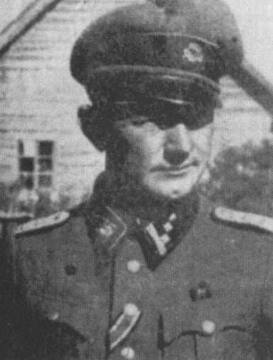
Pēteris Čevers - national partisan and commander of a partisan group
Pēteris Čevera - national partisan and commander of a national partisan group
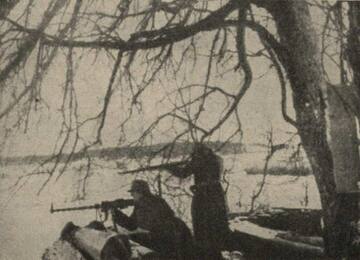
Captain Aleksandar Leving's memories of a reconnaissance expedition over Venta near Lenas
In February 1919, both sides of the Venta River were active in reconnaissance activities. Captain Alexander Loeving, Chief of the Cavalry Division, was one of the commanders of the reconnaissance raids.

Monuments to Lithuanian Independence. Histories of Monuments Created by Roberts Antinis: (III) Revival
One of the manifestations of the changing society during the Lithuanian Persistörkymo Sąjūdis era was the search and restoration of Independence monuments destroyed during the Soviet era, which began in 1988. Symbols of Independence, Freedom and Statehood once again appeared in Lithuanian cities and towns.
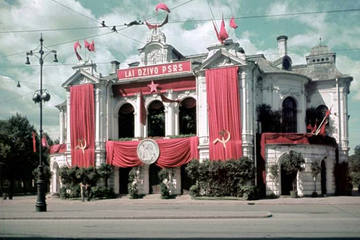
About the occupation of Latvia
In 1940, the existence of the independent state of Latvia was interrupted by the occupation and annexation, or incorporation, of the Soviet Union into the Union of Soviet Socialist Republics (USSR).
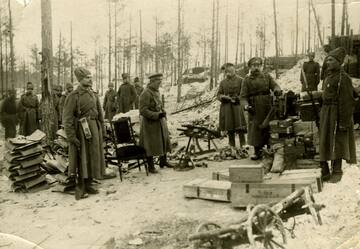
About Christmas battles
The Christmas Battles ended on January 11. The Latvian riflemen managed to capture the heavily fortified German army position - Ložmetējkalnu - on the third day of the battle. The price of the Christmas Battles was very high. Hundreds of Latvian and other Russian army soldiers had lost their lives trying to knock the Germans out of their positions. The narrator vividly describes the scenes on the battlefield after the end of the Christmas Battles.
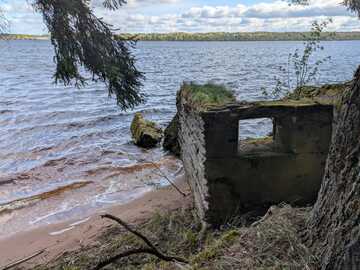
Tome parish destroyed during World War I
The story of one of the most destroyed parishes in Latvia during the First World War - Tomes parish
“PZ" - border zone
Memories of Andris Zaļkalns, chairman of the Vērgale village council of people's deputies (1982-1989), about life in the border zone.
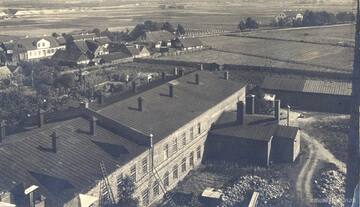
Former woodworking plant "Vulkāns"
A powerful factory with a rich history dating back to 1878.
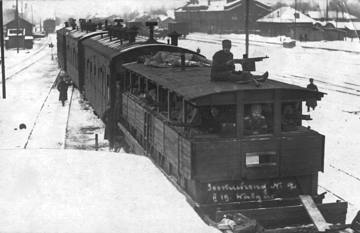
About the Latvian War of Independence and the events of 1919 in Alūksne
On March 27, 1919, the 1st Valmiera Infantry Regiment, together with the Estonian Guards (kaitselit) battalions of Tallinn (then Rēvele) and Tērbatas, as well as three armored trains, began the liberation of Latvia from the Bolsheviks from the banks of the Melnupe River.
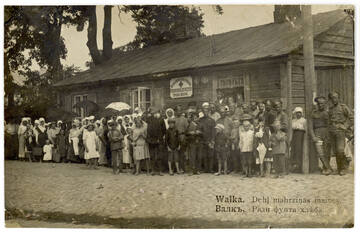
From Ádolfs Ers' book "Vidzeme in the Struggle for Freedom" about the refugees' journey in Valka
Starting from the time of the refugees, Valka was given a more important role than other cities in Vidzeme, because it was home to the politically active newspaper “Līdums”, where Latvia’s spiritual and political weapons were forged, and also because it was a crossroads where roads from three sides of Latvia converged: from Riga, Alūksne, Mozekile, and also from Estonia and Russia. It had connections with refugees from all sides – Tartu, Pliska, Moscow and St. Petersburg. There was a large refugee center here.

The march of the Ilūkste partisan regiment
Jānis Baltmanis shares his memories of participating in the national resistance movement from the summer of 1944 to the summer of 1946.
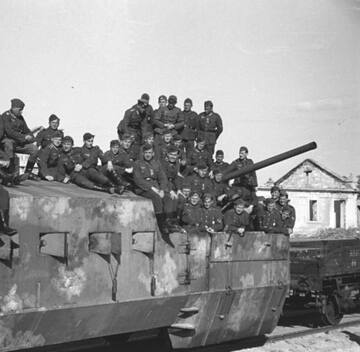
The last battle of the German Army's 3rd armored train at Vaiņode Station
In October 1944, the German army retreats. The 3rd armoured train arrives at Vaiņode station.
As a result of the collapse of the German front, only small units of the German 61st Infantry Division, supported by the armoured train, were present in the eastern outskirts of Vaiņode. The resistance was quickly overcome and by the evening of 9 October the whole of Vaiņode was under the complete control of the Red Army.
The report of the commander of the German army armoured train No.3 reflects the intense events of those days and the loss of armoured train No.3.
Tartu on the list of US nuclear targets in the Cold War
Raadi Military Airfield in Tartu was the target of a US nuclear attack during the Cold War.
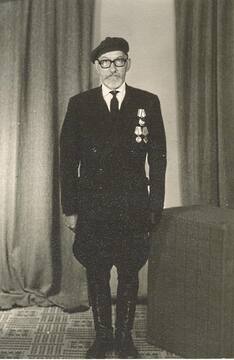
The role of former legion lieutenant - Cheka agent Arvīds Gailītis in the liquidation of the Pēteris Čevers group
Captain Pēteris Čevers and seven other partisans were captured on November 1, 1950, in the Engure forest massif, where, quite by chance, a fake partisan group led by former Legion Lieutenant Arvīds Gailītis (the agent-combatant's nickname "Grosbergs") was stationed nearby. It included operatives of the Latvian SSR VDM and agent-combatants who posed as "forest brothers".
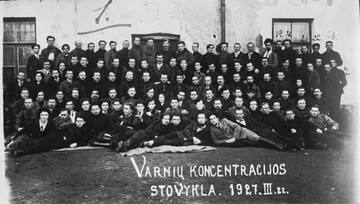
Varniai Camp: Where Communists and Christian Democrats Played Chess
The Varniai concentration camp, which operated from 1926 to 1931, became a special place where communists, Christian Democrats, and even petty hooligans were imprisoned together - anyone who could pose a threat to the Smetona regime.
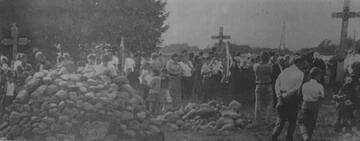
Source: Living Testimonies of the Baltic Way
Through the eyes of journalists, the film tells the story of the impressions and emotions of the participants of the Baltic Way in 1989, and the shared experiences of Lithuanians and Latvians that day.
"But – who has a life by the sea..." (fragment)
A short excerpt from an interview with Eriks Sēnis from Ģipka. He tells his memories of his life.
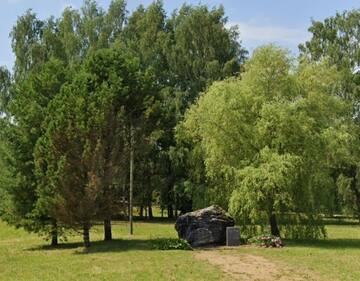
This is where the "Panfilov Division" met May 9th
The Red Army's "Panfilov Division" was located near Pampāli on May 9, 1945. The division headquarters was most likely located in the Pampāli elementary school.
J. Lukša Daumantas's memoirs about partisan Christmas
The memoirs tell about the celebration of Christmas among the partisans, the efforts of the NKVD/MGB to take advantage of it, and the efforts of the partisan leadership to protect them.
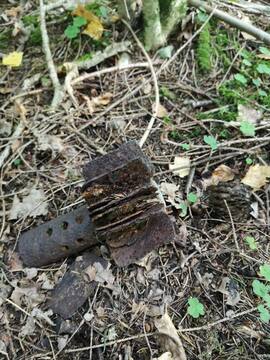
Pranks and games with military ammunition
After World War II, the land of Latvia was full of physical remnants of war. It was a large number of shells, unexploded mines and simply cartridges. Even now, especially in places where active war activity took place, unexploded mines are found, which is a great rarity, while in the post-war years these shells were a part of everyday life for residents in forests and even in yards, and even children's toys.
Col. Vladas Skorupskis' memoirs about the battles with Gen. L. Želigovskis' troops
Col. V. Skorupskis's memoirs convey
The experience of the battles with the Polish army in the autumn of 1920, emphasizing the victory of the Lithuanian army at Širvintos and Giedraičiai.
Crossing the border regime zone
A "propusk" or permission to cross the border regime zone was as mandatory as a bus ticket.
The inconvenient testimony of Col. V. Skorupskis about the coup of December 17, 1926
In 1930, Col. V. Skorupskis' French publishing house Charles – Lavauzelle & Co published the book "Memories of a Witness to Military Events in Lithuania", the sixth chapter of which is dedicated to the December Coup.
The departure of the warship President Smetona from Klaipėda in 1939.
The memoirs tell about the entry of the German army into the Klaipėda region, and the withdrawal of the Lithuanian warship "President Smetona" from Lithuania.
Resisting the Soviets: Spreading Free Speech
The curtain of the Cold War and Soviet control, however, was not able to completely block the broadcasts of radio stations from the West. They also allowed freer speech to reach occupied Lithuania. This was one of the few gaps that could penetrate the curtain of Soviet control, ideology, and propaganda. The Soviets devoted a lot of effort and resources to suppress and disrupt these broadcasts.
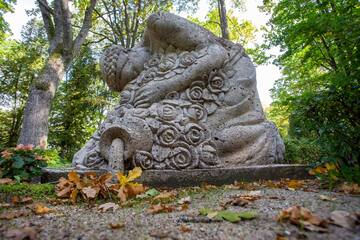
About the lesser-known works of Latvian sculptor Kārlis Zāles in the old cemeteries of Dīvala and Trikāta
One of the little-known works of sculptor Kārlis Zāle (1888-1942) is the travertine sculpture "Fallen Roses", created between 1939 and 1940, and associated with the creation of the Brothers' Cemetery ensemble.
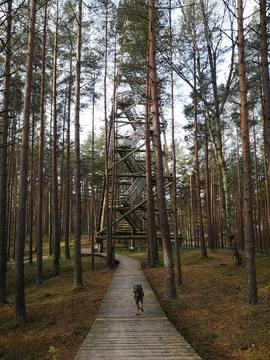
Ball Mountain
Bumbu Hill is a high hill in the Bolderāja dunes, Kleistu Forest, Riga. A memorial site for the Latvian Freedom Struggle. During the Bermontiades in November 1919, the command post of the Latgale Division led by Krišjānis Berķis was located here. The 6th Riga Infantry Regiment, attacking from Bumbu Hill, captured Sudrabkalniņš. A memorial plaque was installed in 1939, which was destroyed in 1969. The memorial site was restored in 1989.
Sisters rescued machine guns and wounded soldiers in Baltriškės
The story of sisters who were awarded the Order of the Cross of Vytis for helping the army in the battles against the Bolsheviks.
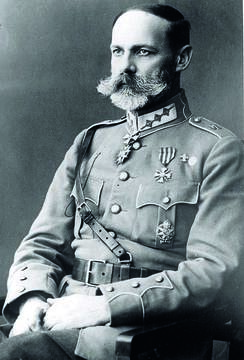
About General Karlis Goppers
General K. Goppers (1876-1941) was an outstanding soldier and an outstanding person. He distinguished himself as a successful commander who took command of battalions and regiments, heroically leading his riflemen in battles for the freedom of Latvia during the First World War (1914-1919). He participated in the battles at Tīreļpurva, Ložmetējkalns, and in the defense of Riga.
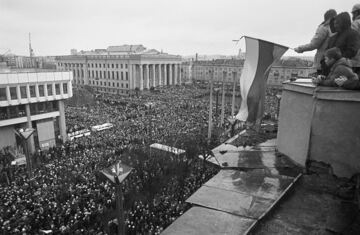
Soviet aggression: the events of January 1991 and their witnesses
Lithuania had to fight for its Independence, which was restored on March 11, 1990. There was unarmed resistance, but the Soviet occupiers and aggressors used the army, firearms and tanks against the unarmed. In January 1991, the Soviet leadership and army began to implement a plan aimed at destroying Lithuania's Independence. A coup d'état was launched. The Lithuanian people resisted the Soviet empire.
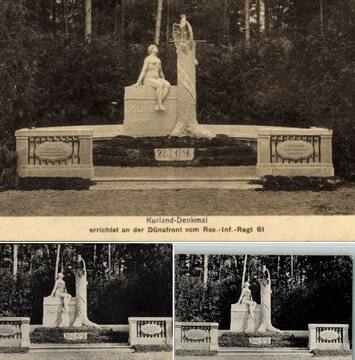
Courland (Mātīte) Monument
A monument in the shape of a woman erected by the German army during World War I
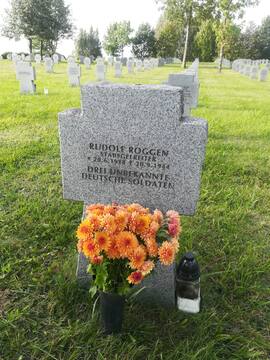
"The war is not over until the last soldier is buried" (Saldus German Soldiers' Cemetery)
Kurzeme emerged as a separate and distinct battlefield on 10 October 1944. Some 500 000 German troops were counted as surrounded. According to reports from the 1st Baltic Front Headquarters, only a "small effort" was needed to completely liberate the entire Baltic coast. However, the fighting in Kurland continued for another seven months and Kurland became a symbol of the end of the Second World War.
During the seven months of fighting until May 1945, German forces in Courland lost 154 108 soldiers killed, wounded and missing. Since 1997, a war cemetery survey and reburial of soldiers near Saldus has been carried out and currently 27,000 names of fallen soldiers can be found here
Women in the ranks of the Lithuanian Riflemen's Union
The story tells about the role of women in the ranks of the Lithuanian Riflemen's Union.
Senior Lieutenant Budrevičius's memoirs about joining the Lithuanian Army and the formation of the first regiment
The memoirs convey the experience of hearing about the declaration of Lithuanian independence, the organization of military units, and the battles with the Bolsheviks.
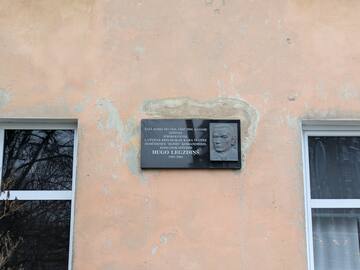
Hugo Legzdziņš, captain of Latvia's first submarine "Ronis"
Captain of Latvia's first submarine "Ronis" Hugo Legzdziņš, arrest of "Ronis" team
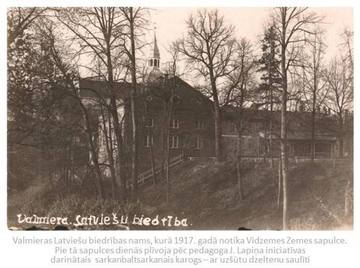
March 1917 - an important month in the history of Valmiera and Latvia
In March 1917, more than a year before the proclamation of the state of Latvia, the Vidzeme Provisional Land Council was founded in Valmiera, which adopted a resolution on the autonomy and self-determination rights of Latvia. On the day of the founding of the Council, the red, white and red flag was raised for the first time at the meeting place.
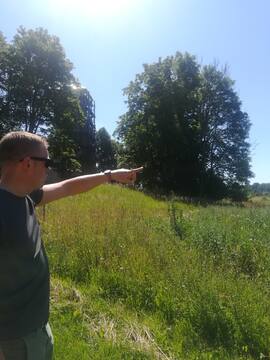
Grieze camp in 1945 – a place where destinies were intertwined
Historian Roberts Sipenieks talks about the finds at the Grieze filtration camp site
A fateful meeting in a bunker: the 1949 Congress of Lithuanian Partisan Commanders
On February 10-20, 1949, the only congress of partisan commanders in occupied Lithuania took place in the Mikniai farmstead bunker in the Minaičiai village of Radviliškis district, during which the Lithuanian Freedom Struggle Movement (LLKS) was founded and the Declaration of Independence was proclaimed.
Julius Kuperjanov and his tomb
The grave of Julius Kuperjanov, a hero of the Estonian War of Independence, became a symbol of resistance during the Soviet era.
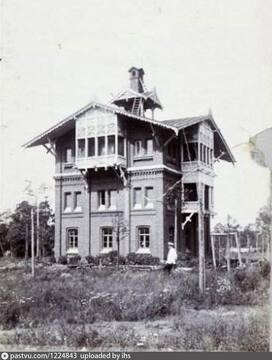
Winged warriors
The use of carrier pigeons or carrier pigeons was a widely used means of communication in the early 20th century.
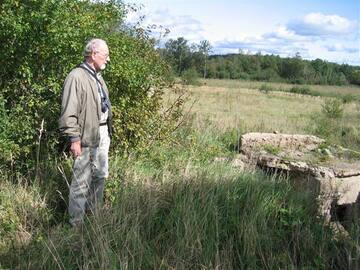
19-year-old Alfons Wolgemuth's story about the reconnaissance battle on February 17, 1945 near Priekule
Alfons Volgemuth was a 19-year-old boy, a radio operator and served in the army of Nazi Germany.
"No one has come back from this operation and it is not known if there are any survivors. I myself took part in that war as a 19-year-old radio operator and I am one of the 2, later 3 survivors who were taken prisoner by the Russians. I want to reflect the events from my own experience."
The forgotten coast of Livonia
The last Livonian villages on the northwestern coast of Latvia were systematically destroyed and declared a forbidden zone by the Councils since 1950. Only a tiny handful of this people survived in 12 fishing villages, and they are currently experiencing a kind of cultural renaissance.

Soviet aggression: attacks on Lithuanian border control posts in 1990–1991.
In 1990, after Lithuania regained its independence and began protecting its state borders, it faced attacks by Soviet power structures, which claimed the lives of more than one Lithuanian officer.
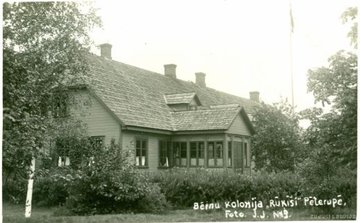
About the events of the children's colony "Rūķīši" during the pre-war and World War II periods
Children were taken from the families of partisan supporters. In March 1943, there were 1,100 children in the Salaspils camp. About 250 children died of measles, typhoid fever and other diseases, several hundred children were transferred to farms in surrounding parishes, and about 300 children ended up in orphanages in Riga's Jurmala, Igate and Saulkrasti.
In Saulkrasti, the children ended up at the Latvian Children's Aid Society's children's colony "Rūķīši".
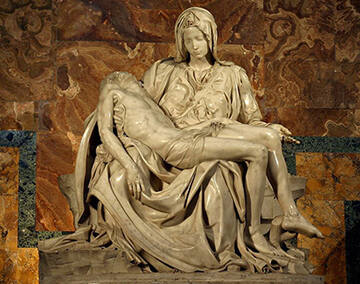
Pieta or "Māmuļa" Memorial Ensemble in Nīkrāce
Pieta, or Mammy, is a well-known motif in European culture and art, and was also used in Soviet times.
Tartu celebrates 1919 victory in Tähtvere
Description of the Battle of Tähtvere in January 1919 during the Estonian War of Independence, during which Estonian troops liberated Tartu from the Red Army.

Air-assisted Edgars Auniņš's memories of the end of World War II Lake Ezere
Excerpt from a memoir about the surrender of Kurzeme in May 1945, from the memoirs of Air Lance Corporal Edgars Aunins
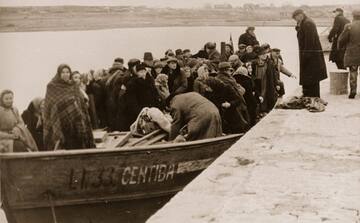
The first refugee boat "Centība" from Bambali
On 31 October 1944, the boat "Centība" left the Kurzeme coast. The departure of this boat was reconstructed by Valentīne Lasmane, the Convener of the Latvian Central Council, from the recollections of several fellow passengers
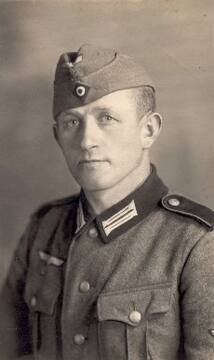
Missing German Army Soldiers During the Battles of Courland - Herman Fauls
The documentation of the German Army Group "North", which was later renamed "Kurland" during the siege of Kurzeme, still does not contain clear information about approximately 50,000 German army soldiers. These soldiers are listed as missing in action. Even today, relatives of these soldiers are trying to find traces of their relatives and ancestors in Kurzeme, both documentary and physical. One such story is about Herman Faul, who has been missing since December 27, 1944 - the 3rd Battle of Kurzeme, or Christmas Battles.
Bombing of Rezekne in 1944
The bombing of Rēzekne took place on Easter 1944, and as a result, a large part of the city's buildings were destroyed and dozens of civilians were killed, while thousands more were left homeless. The people who experienced these events firsthand and can tell us about them were only children at the time. The author of this story is one of them.











